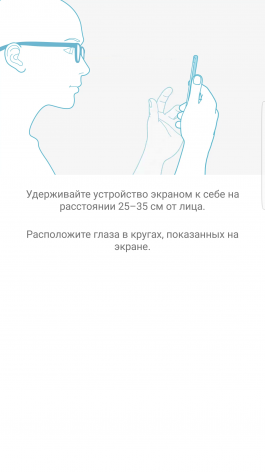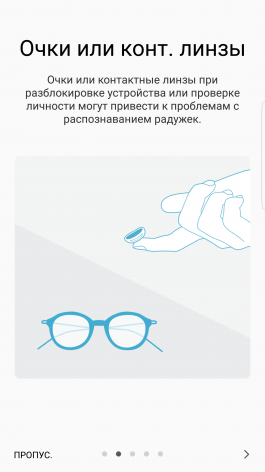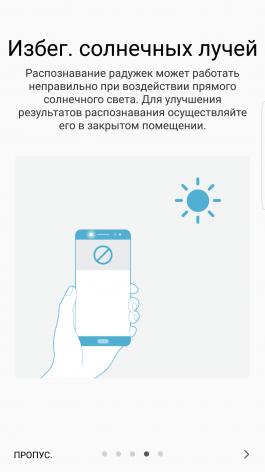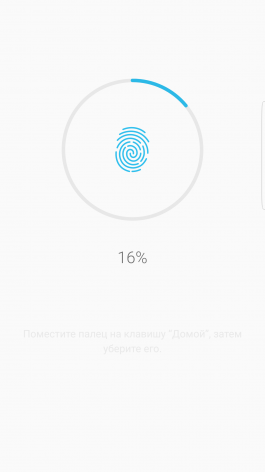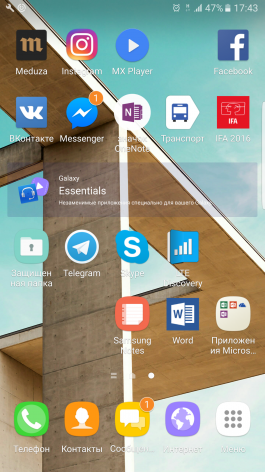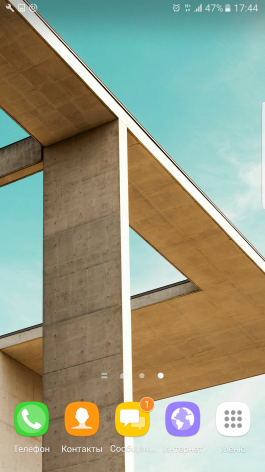Samsung is another company with many flagships, which are again divided into spring and autumn ones. Why miss the opportunity to loudly announce your smartphones twice a year? So they don't miss it: Samsung Galaxy S7 / S7 edge got their share of applause, attention and consumer interest, now it's time for the "big flagship" - Note 7, which is very similar in characteristics to S7, but larger in size, equipped with a stylus, modified software and - this year - a curved display.
Last year we already saw something similar, only without a curved display, under the name Note 5 - as you can see, Samsung still unifies the lineup... Now it is more difficult to get confused: all new devices are under the same index. And they are very close in appearance - having received a curved display, the Note 7 became very similar to the S7 edge, only enlarged, with a stylus and USB Type-C - and the thickness of the case remained unchanged.
I would be happy about the last fact, but I am writing this review after all the well-known events with the explosions of smartphones when charging and one of the largest reviews of devices in history - and this issue simply cannot be ignored. Let's talk, however, about this below, as well as about everything else.
⇡ Specifications
| Samsung GALAXY Note 7 | Samsung GALAXY Note 5 | Samsung GALAXY S7 | Google Nexus 6P | Apple iPhone 6s Plus | |
|---|---|---|---|---|---|
| Display | 5.7 inches, AMOLED, 2560 × 1440 pixels, 515.3 ppi, capacitive multitouch, Always-On display, curved | 5.7 inches, AMOLED, 2560 × 1440 pixels, 515.3 ppi, capacitive multitouch | 5.1 inches, AMOLED, 2560 × 1440 pixels, 575.9 ppi, capacitive multitouch | 5.7 inches, AMOLED, 2560 × 1440 pixels, 515 ppi, capacitive multitouch | 5.5 inches, IPS, 1920 × 1080 pixels, 401 ppi, 3D Touch, Taptic Engine, capacitive multitouch |
| Stylus | Yes, S Pen | Yes, S Pen | No | No | No |
| Protective glass | Corning Gorilla Glass 5 on both sides | Corning Gorilla Glass 4 on both sides | Corning Gorilla Glass (version not specified) on both sides | Corning Gorilla Glass 4 | Yes, the manufacturer is not specified |
| CPU | Exynos 8890 Octa (four Moongoose cores, 2.6 GHz; four ARM Cortex-A53 cores, 1.6 GHz) | Samsung Exynos 7420 (four ARM Cortex-A57 cores @ 2.1 GHz; four ARM Cortex-A53 cores @ 1.5 GHz) | Exynos 8890 Octa (four Moongoose cores, 2.3 GHz; four ARM Cortex-A53 cores, 1.6 GHz) | Qualcomm Snapdragon 810 (four cores ARM Cortex-A53, frequency 1.55 GHz + two cores ARM Cortex-A57, frequency 2 GHz) | Apple A9 (two Apple Twister cores, 1.8 GHz clock speed, integrated Apple M9 coprocessor) |
| Graphic controller | Mali-T880 MP12 | Mali-T760 MP8 | Mali-T880 MP12 | Adreno 430 | There is no data |
| Operational memory | 4 GB | 4 GB | 4 GB | 3 GB | 2 GB |
| Flash memory | 64 GB | 32/64 GB | 32/64 GB | 32/64/128 GB | 16/64/128 GB |
| Memory card support | Yes, in the Duos version - a combined slot for a memory card and a SIM card | No | Yes, in the S7 Duos version - a combined slot for a memory card and a SIM card | No | No |
| Connectors | USB Type-C, 3.5 mm mini-jack | microUSB, mini-jack 3.5 mm | microUSB, mini-jack 3.5 mm | USB-C, 3.5mm mini jack | Lightning, 3.5mm mini jack |
| SIM card | One nanoSIM / two nanoSIM | One nanoSIM | One nanoSIM / two nanoSIM | One nanoSIM | One nanoSIM |
| Cellular 2G | GSM 850/900/1800/1900 MHz | GSM 850/900/1800/1900 MHz | GSM 850/900/1800/1900 MHz | GSM 850/900/1800/1900 MHz | |
| Cellular 3G | HSPA 850/900/1900/2100 MHz | HSPA 850/900/1700/1900/2100 MHz | HSDPA 850/900/1700/1800/1900/2100 MHz | HDSPA 850/900/1700/1900/2100 MHz | |
| Cellular 4G | FDD LTE Cat. 6 (up to 300/50 Mbps): ranges 1, 2, 3, 4, 5, 7, 8, 12, 17, 20 | LTE Cat. 12 (up to 600/50 Mbps): ranges 1, 2, 3, 4, 5, 7, 12, 13, 20 | LTE Cat. 6 (up to 300 Mbps): ranges 1, 2, 3, 4, 5, 7, 8, 9, 17, 19, 20, 28, 38, 39, 40, 41 | LTE Cat. 6 (up to 150 Mbps), ranges 1, 2, 3, 4, 5, 7, 8, 12, 13, 17, 18, 19, 20, 25, 26, 28, 29, 30, 38, 39, 40, 41 | |
| Wi-Fi | 802.11a / b / g / n / ac | 802.11a / b / g / n / ac | 802.11a / b / g / n / ac | 802.11a / b / g / n / ac | 802.11a / b / g / n / ac |
| Bluetooth | 4.2 | 4.1 | 4.2 | 4.2 | 4.1 |
| NFC | There is | There is | There is | There is | No |
| Navigation | GPS, A-GPS, GLONASS, BeiDou | GPS, A-GPS, GLONASS, BeiDou | GPS, A-GPS, GLONASS, BeiDou | GPS, A-GPS, GLONASS, BeiDou | GPS, A-GPS, GLONASS |
| Sensors | Illumination, proximity, accelerometer / gyroscope, magnetometer (digital compass), barometer, heart rate | Illumination, proximity, accelerometer / gyroscope, magnetometer (digital compass), barometer, heart rate | Illumination, proximity, accelerometer / gyroscope, magnetometer (digital compass), pedometer | ||
| Illumination, proximity, accelerometer / gyroscope, magnetometer (digital compass), barometer | |||||
| The fingerprint scanner | There is | There is | There is | There is | There is |
| Main camera | 16 MP, ƒ / 1.9, autofocus, LED flash, optical stabilization, 4K video recording | 12 MP, ƒ / 1.7, phase detection autofocus, LED flash, optical stabilization, 4K video recording | 12.3 MP, ƒ / 2.0, laser autofocus, LED flash, 4K video recording | 12 MP, ƒ / 2.2, phase detection autofocus, LED flash, optical stabilization, 4K video recording | |
| Front-camera | 5 MP, fixed focus | 5 MP, fixed focus | 5 MP, fixed focus | 8 MP, fixed focus | 5 MP, fixed focus |
| Nutrition | Removable battery 13.3 Wh (3500 mAh, 3.8 V) | Removable battery 12.23 Wh (3220 mAh, 3.8 V) | Non-removable battery 11.4 Wh (3000 mAh, 3.8 V) | Removable battery 13.11 Wh (3450 mAh, 3.8 V) | Removable battery 10.45 Wh (2750 mAh, 3.82 V) |
| The size | 153.5 x 73.9 x 7.9 mm | 154 x 79 x 7.5 mm | 142.4 x 69.6 x 7.9 mm | 159.3 x 77.8 x 7.3 mm | 158.2 x 77.9 x 7.3 mm |
| Weight | 169 grams | 176 grams | 152 grams | 178 grams | 192 grams |
| Hull protection | IP68 |
No | IP68 Up to half an hour at a depth of 1.5 m |
No | Unknown |
| Operating system | Android 6.0 Marshmallow, Grace UX's own skin | Android 5.1 Lolliipop, Samsung's own TouchWiz shell | Android 6.0 Marshmallow, Samsung's own TouchWiz shell | Android 6.0 Marshmallow | iOS 9 |
| Actual price | 64 990 rubles | 35,000-43,000 rubles depending on the amount of memory | From 49 990 rubles | 39,990-49,990 rubles depending on the amount of memory | 57,990, 66,990 and 74,990 rubles depending on the amount of memory |
⇡ Appearance and ergonomics

Samsung found its own recipe for smartphone design back in the Galaxy S6 - and has been following it without deviations for a year and a half. I must admit, the recipe is really good: take slim body, sheathe it on both sides with tempered glass, let the metal around the perimeter; at the bottom of the front panel, place an oval button with a fingerprint scanner; if necessary, bend the edges of the body. In Note 7, this scheme is brought to perfection - the edges of the glass are bent both on the front side and on the back, which makes the smartphone not only visually symmetrical, but, excuse the stamp, fits perfectly into the hand.
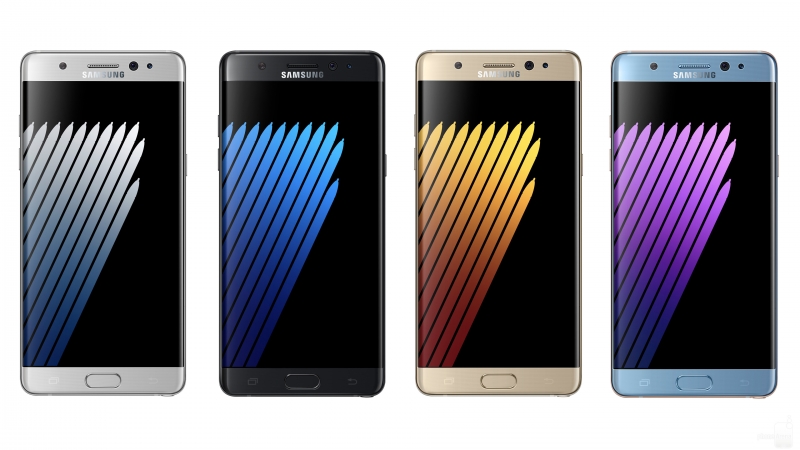
The latter is really impressive - when operating a 5.7-inch gadget, you do not experience any serious discomfort, the sensations are quite comparable to those that were when working with the S7, and much more pleasant than when working with the edge. Except, of course, that you have to work with two hands without fail - you can, of course, activate a special "one-handed" mode, with a picture in a picture - but this, frankly, is not very convenient. The Note 7 also has difficulty in pocketing. Of course, the pockets are different, but I tried several - of all the smartphone, at least slightly, but protruded. However, all this is an inevitable feature of all large smartphones, which is also called the terrible word "phablet".
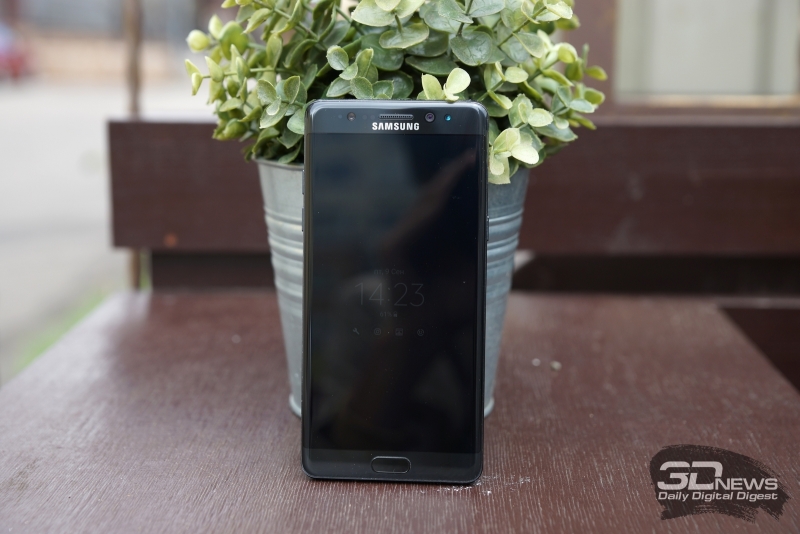
Samsung Galaxy Note 7 front panel. Above the screen: earpiece, front camera, light and proximity sensors, infrared iris recognition camera, and a status indicator. Below the screen: the "Home" button with a fingerprint scanner and touch keys "Back" and call the list of open applications
Unfortunately, the Note 7 looks flawless only in photos and display cases. No, it doesn't turn into a pumpkin after purchase, but the glass back collects fingerprints very easily. This is not too critical if you have a black version, as in our case. If yours is blue or silver - get your rags ready, gentlemen and ladies. The olephobic coating helps to quickly erase marks, but does not protect the case from collecting them.

Both the display and the back panel use Gorilla Glass 5, which theoretically shouldn't react at all to the touch of keys or small things in your pocket. In practice, things are not so great. Probably, the glass can withstand drops from a small height, but it scratches with a bang. To get the back panel scratched, you didn't even need to carry a smartphone with keys - you just need to put it on not perfectly smooth surfaces from time to time. There is no damage to functionality, but it doesn't look great.

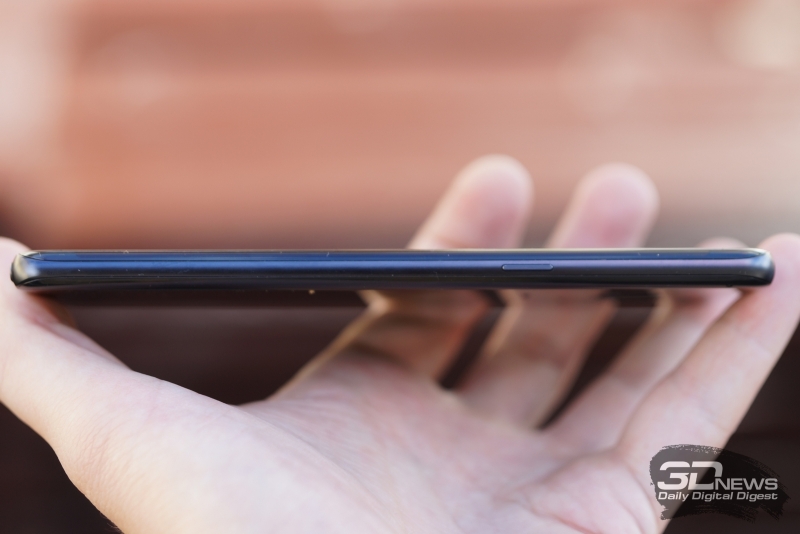
The layout and shape of the keys are identical to what we saw on the Galaxy S7: two volume buttons on the left and a power button on the right. You need to get used to this, on almost all other Android smartphones they fall together on the right edge. Under the display - mechanical Home button with a built-in fingerprint scanner, with which you can unlock the device in one move - this is just a fairly common solution, and very convenient in addition.
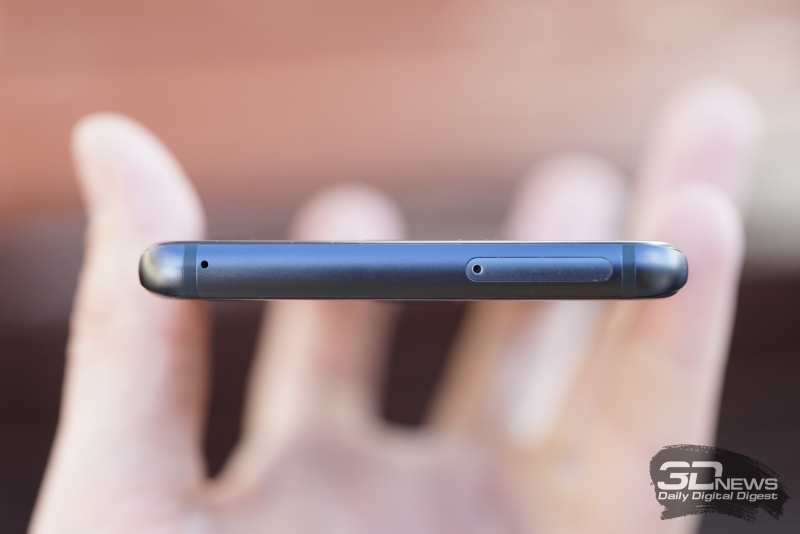
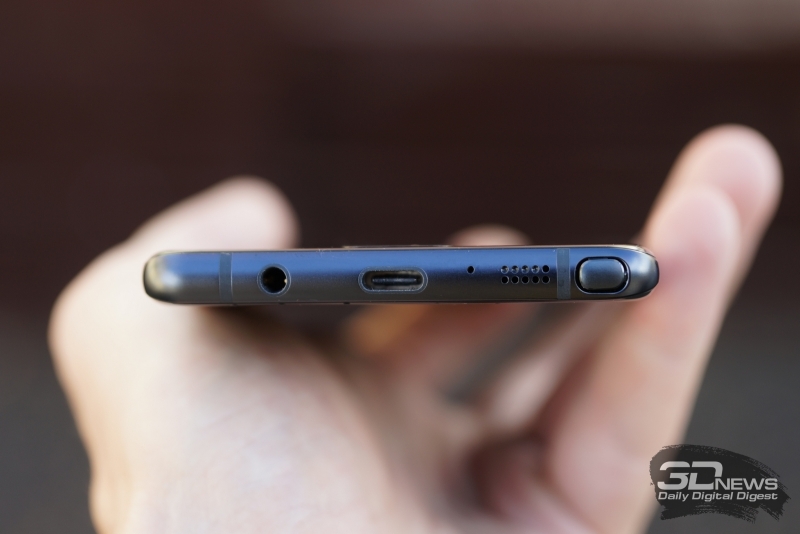
The Note 7 is the first Samsung smartphone and the first ever after the Lumia 950 to have an iris scanner built into it.
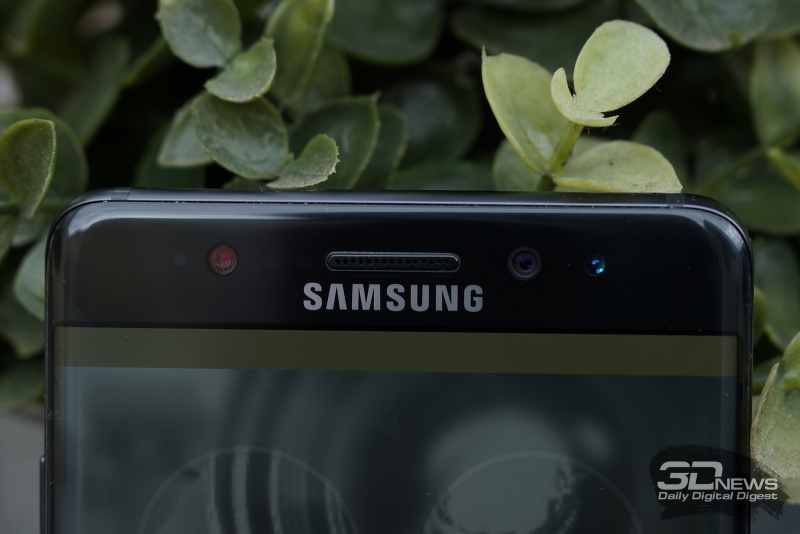
The infrared sensor is located above the screen and is able to recognize the owner quite quickly, if you just bring the device at a distance of 25-30 cm to your eyes. Another thing is that, unlike a fingerprint scanner, you first need to press the power button and swipe the lock screen - and then also bring the smartphone in an unnatural position to your face. You also need to take off your glasses, contact lenses, carefully monitor the cleanliness of the sensor and endure for a long time when the device memorizes the shape of your eyes: he personally remembered mine from the 19th (I counted) attempt - it took at least five rather dreary minutes. But faking an iris, unlike a fingerprint, is much more difficult. However, there is always a verification PIN - if you really want to, you can bypass such strict protection.
|
|
|
|
||
|
|
|
|
By the way, I will not write separately about the fingerprint scanner - they have reached such a level that they work equally quickly in expensive devices and in cheap ones, and when you come across a scanner in a smartphone for 10 thousand (like Vernee Thor), you are not even surprised. In general, it is here, and it works quickly, without interruptions.
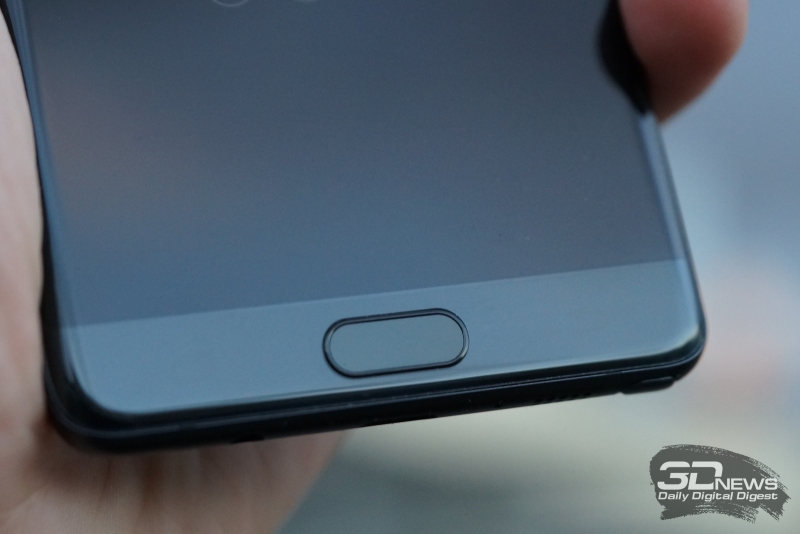
The case, like the S7, is protected according to the IP68 standard (up to half an hour at a depth of one and a half meters) - you can not be afraid of splashing and accidental drowning in a sink, in the sea or somewhere else. Since Sony abandoned the release of devices protected by the same standard, this can be called a proprietary Samsung chip. In terms of body thickness, by the way, Note 7 is identical to the “regular” S7 and is two tenths of a millimeter thicker than the S7 edge.
The same small problem with the speaker remains. It is monophonic, located on the bottom edge, and you can hear it well when the smartphone is lying flat - but as soon as you pick it up, especially in landscape orientation, the tiny grille is blocked by your finger and it is no longer possible to hear something. You have to carefully choose a place for your finger and put it on the stylus hidden in the body.
⇡ Software,SPen
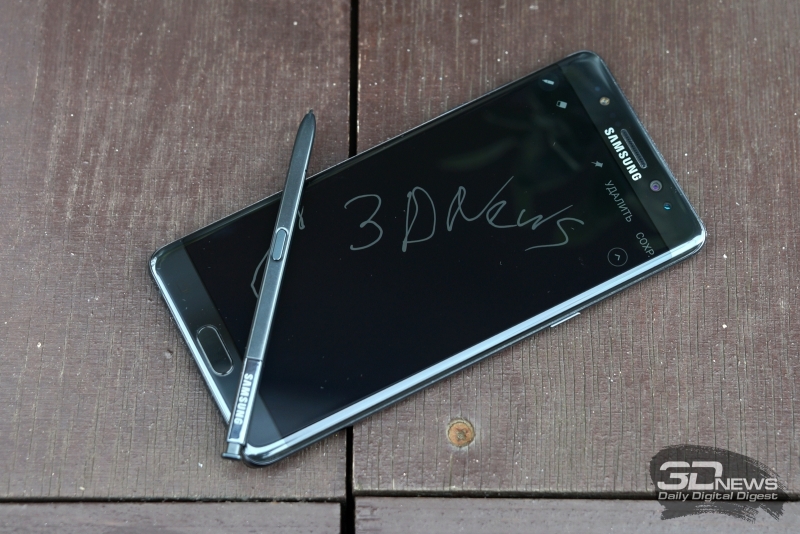
While working on the Note 7, Samsung took and changed the name of its Android shell. The long-standing TouchWiz has been replaced by Grace UX. And at first glance, it seems that, apart from the name and the settings menu, nothing has changed. This is a deceptive impression - the changes, though not dramatic, but in the little things make the device much more comfortable to use.
|
|
|
|
|
|
|
|
First of all, after relatively long use, you notice that the smartphone no longer consumes energy in standby mode, like fire is oxygen. Leaving the Note 7 unplugged overnight won't find it empty the next morning. On the contrary, a maximum of 5-7% will be lost, or even less. Another key problem with TouchWiz also disappeared - along with a bunch of preinstalled proprietary applications that had to be forcibly "demolished" (and some were completely impossible to remove). Now the required software is a minimum, everything you need can be downloaded independently or from Google play, or from the store Samsung apps... True, the process of the first launch with the need to go first to account Google, then - to the account Samsung record and signing under a myriad of different agreements still remained too long.
Samsung did not wait for the IFA 2016 exhibition a bit and announced its new flagship Galaxy Note7 back in early August. And on August 19, the novelty went on sale in some countries. And although Russia is not among them, we were able to get a smartphone and studied it in detail.
You can read about the key features of the novelty in our newsletter, so we will not retell the facts voiced at the presentation here. However, before proceeding directly to acquaintance with the device, let's think a little about the evolution of the Note line. Exactly five years ago, the first Samsung Galaxy Note was announced, and for quite a long time this line developed in parallel with the Galaxy S series. Moreover, Note devices gradually began to lose their main difference - a large display diagonal. More precisely, the diagonal from 5.5 ″ is no longer something unusual, and even Galaxy S devices have got screens of the same size.
Another proprietary Note quality is the included stylus (and, accordingly, support for full-fledged work with it in a smartphone). Here, the manufacturer already more clearly distinguishes between the two lines, and competitors are not particularly in a hurry to equip their flagships with stylus. However, if earlier you had to pay for the presence of a stylus with the dimensions of the device (after all, the Galaxy Note remained larger than the Galaxy S), now it is no longer necessary to talk about any significant difference.
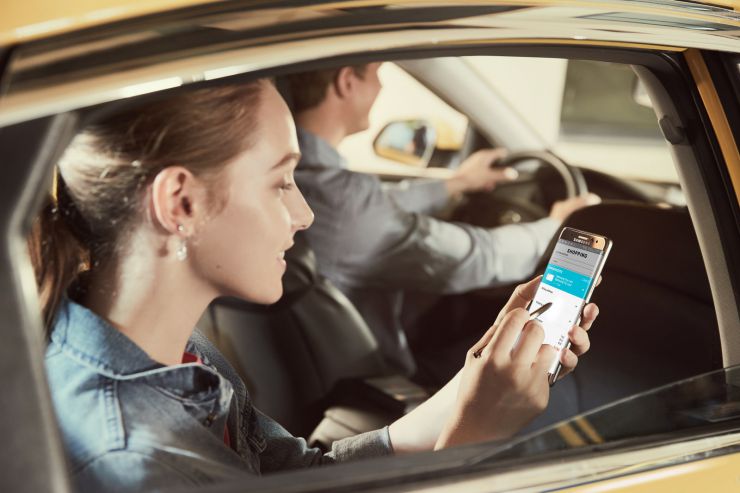
The situation with the curved screen is even more interesting. Technologists and Samsung fans remember that the first screen that folds from the side was the Note line smartphone: it was called the Samsung Galaxy Note Edge, and there was a fold there only on one side (you can also recall the experimental Samsung Galaxy Round smartphone here, but it did not receive development). However, then the curved-screen feature moved to the Galaxy S line, with the S Edge devices getting a curved screen on both sides. In turn, the new Note was produced without a fold. And now the fold returns to Note. And what's even more interesting, you can't buy a Note7 without a curved screen. That is, in fact, Note7 is replacing not its immediate predecessor in the lineup, but the Samsung Galaxy S7 Edge smartphone. More precisely, judging by the characteristics, it turns out to be in some way a modification of the S7 Edge with several additional features, most of which will probably migrate to Galaxy line S.
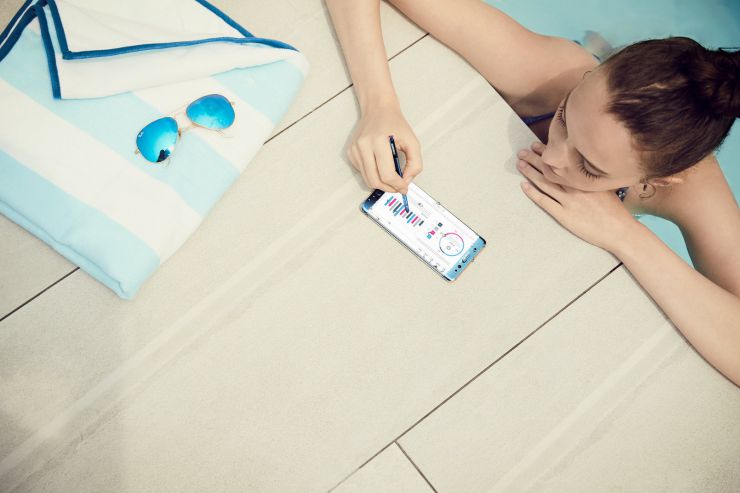
Based on the fact that Samsung has abandoned the word Edge in the name of the new product, it can be assumed that in the future and in Galaxy series S will remain the only version of the flagship - with a curved screen. And, accordingly, the difference between Note and S will be reduced to the presence of a stylus and, possibly, a slight difference in the size of the display (although here we cannot fail to recall the Samsung Galaxy S6 Edge +, which had a 5.7 ″ display).
Let's take a look at Samsung specifications Galaxy Note7.
Specifications Samsung Galaxy Note7
- SoC Samsung Exynos 8890 Octa
- CPU Mongoose @ 2.6 GHz (4 cores) + Cortex-A53 @ 1.6 GHz (4 cores)
- GPU Mali-T880
- Operating Android system 6.0.1
- 5.7 ″ SuperAMOLED touchscreen display, curved on both sides, 2560 × 1440, 515 ppi
- Random access memory (RAM) 4 GB
- Permanent memory 64 GB
- Support for microSD memory cards up to 200 GB
- SIM cards: 2 × Nano-SIM
- Communication GSM / GPRS / EDGE / 3G / LTE Cat.9
- Bluetooth 4.2 LE, NFC, ANT +
- Wi-Fi 802.11b / g / n / ac, 2.4 and 5 GHz
- GPS with A-GPS, Glonass
- Sensors and Sensors: Accelerometer, Geomagnetic Sensor, Gyroscope, Light Sensor, Proximity Sensor, Barometer, Hall Sensor, Fingerprint Scanner, Iris Scanner, Heart Rate Sensor
- Cameras: 5 MP (front) and 12 MP (rear) Dual Pixel, with LED flash, optical stabilization and autofocus, f / 1.7, 4K video shooting
- Battery 3600 mAh, Li-Polymer, non-removable
- Dimensions 154 x 74 x 7.9mm
- Weight 169 g
For clarity, we decided to make a table with the characteristics of the Samsung Galaxy Note7 and its closest analogue Samsung Galaxy S7 Edge, and also added Moto X Force and iPhone 6S Plus - two flagships of competitors to the table.
| Samsung Galaxy Note7 | Samsung Galaxy S7 Edge | Moto x force | Apple iPhone 6s Plus | |
| Screen | 5.7 ″ Super AMOLED, curved on both sides, 2560 × 1440, 515 ppi | 5.5 ″ Super AMOLED, curved on both sides, 2560 × 1440, 534 ppi | 5.4 ″ AMOLED, 2560 × 1440, 540 ppi | 5.5 ″ IPS, 1920 × 1080, 401 ppi |
| SoC (processor) | Samsung Exynos 8890 Octa (4 Mongoose cores @ 2.6 GHz + 4 cores Cortex-A53 @ 1.6) | Qualcomm Snapdragon 810 (4x Cortex-A57 @ 2.0GHz + 4x Cortex-A53 @ 1.5GHz) | Apple A9 (2 cores @ 1.8 GHz, 64-bit ARMv8-A architecture) | |
| GPU | Mali-T880 | Mali-T880 | Adreno 430 | Apple a9 |
| Flash memory | 64 GB | 32 GB | 32 GB | 16/64/128 GB |
| Connectors | USB Type-C (with OTG support), 3.5mm headset jack, stylus hole | Micro-USB (with OTG support), 3.5mm headset jack | Lightning dock connector, 3.5 mm headset jack | |
| Memory card support | microSD (up to 256GB) | microSD (up to 200 GB) | microSD (up to 2 TB) | No |
| RAM | 4 GB | 4 GB | 3 GB | 2 GB |
| Cameras | rear (12 MP; 4K video), front (5 MP) | rear (21 MP; 4K video), front (5 MP) | rear (12 MP; 4K video), front (5 MP) | |
| User identification sensors | fingerprint scanner, iris scanner | Fingerprint's scanner | No | Fingerprint's scanner |
| Hull protection | IP68 (water and dust proof) | IP68 (water and dust proof) | shockproof housing and screen | No |
| Battery capacity (mAh) | 3500 | 3600 | 3760 | 2750 |
| Operating system | Google Android 6.0.1 | Google Android 6.0.1 | Google Android 6.0.1 | Apple iOS 9.0 (upgradeable to 9.2.1) |
| Dimensions (mm) * | 154 × 74 × 7.9 | 151 × 73 × 7.7 | 150 × 78 × 9.2 | 158 × 78 × 7.3 |
| Weight (g) | 169 | 157 | 170 | 190 |
| average price | T-14123351 | T-13485518 | T-13342759 | T-12859250 |
| Samsung Galaxy Note7 Retail Deals | L-14123351-10 | |||
* according to the official data of the manufacturers
The table clearly shows that the changes in the Note7 compared to the S7 Edge are minimal. The diagonal of the display is slightly larger (with the same resolution and other parameters) and, accordingly, the dimensions are slightly larger, but the battery capacity is less. The novelty has twice as much built-in flash memory (this, by the way, may be an excuse for a higher price), and there is also an iris scanner that no one else has, and a USB Type-C connector instead of Micro-USB (this is no longer surprise, but Samsung has it for the first time).
As for the comparison with competitors, the situation here is ambiguous. Moto X Force loses in some way, wins in some way, while its key features are completely different: nylon coating of the back surface and impact resistance (but there is no moisture protection and an iris scanner).
Comparison with the iPhone 6S Plus does not seem to be effective at all, because it will be released in September new iphone, and it would be more correct to compare with him. However, we could not fail to include the market leader's smartphone in the table.
But let's move on to direct testing and understand the Note7 innovations in practice.
Equipment
The smartphone is sold in a black rectangular box.
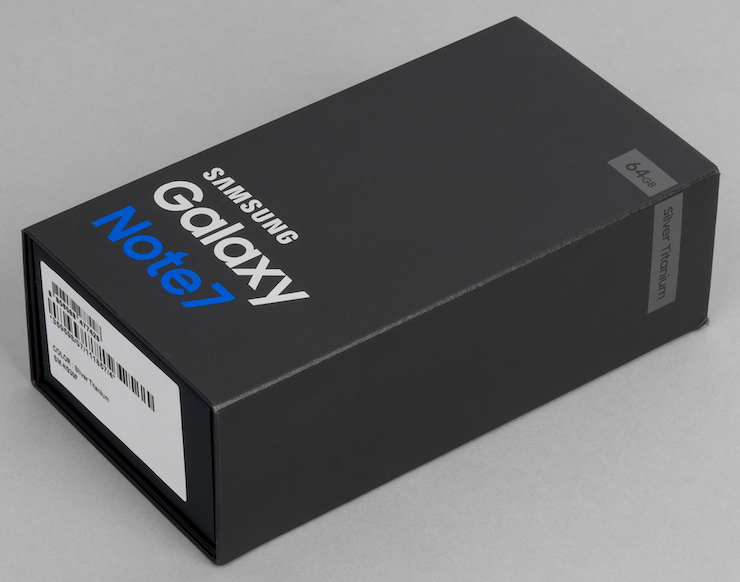
The kit includes a charger with Quick Charge support (5 V 2 A in standard mode, 9 V 1.67 A in Quick Charge mode), a USB Type-C to USB cable, a key for removing the cradle of a SIM card and memory card, an OTG adapter for USB Type-C (for connecting external USB drives with a full-size plug), a USB Type-C to Micro-USB adapter (for charging with a regular Micro-USB cable), information leaflets and brochures, as well as headphones in a separate plastic box and with an additional set of rubber ear pads.
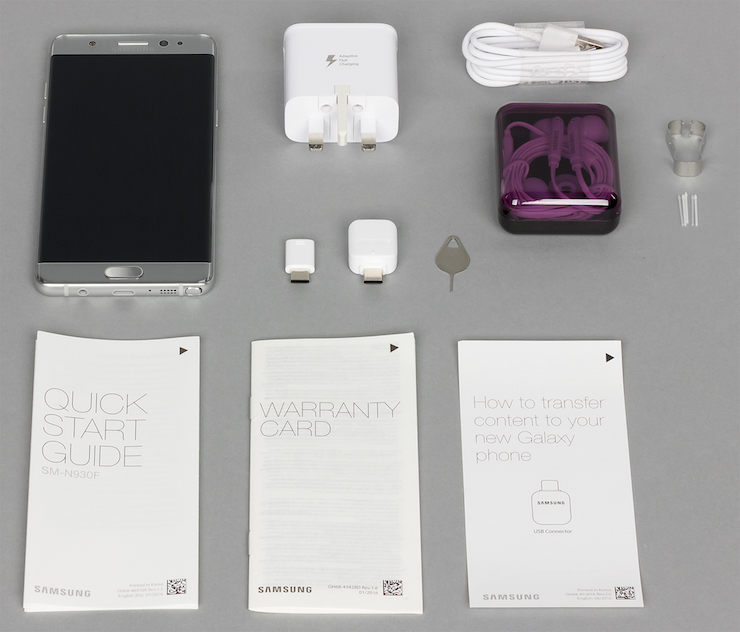
The earbuds are the same as those of the Samsung Galaxy S7 Edge and S6 Edge + and we can only rejoice at that. They have a tangle free flat wire, very comfortable shape ear cushions, and most importantly - really decent sound. Even deep bass is conveyed with dignity.
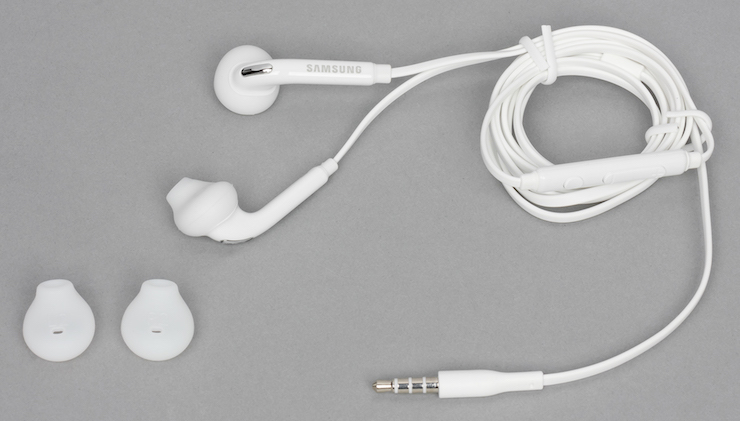
Overall, we can't help but note that Samsung really cares about its users and tries to include everything you need in the package. After all, the same adapters for the new USB Type-C connector will probably be needed, and looking for them is an unnecessary problem. You will spend more time and money on the way to the store than the adapter itself costs.
Design
The appearance of the Samsung Galaxy Note7 is much closer to the S7 Edge than to the previous Note. In fact, if you do not compare the Note7 and S7 Edge face to face, then they can be quite confused. The overall look and style are the same. And, frankly, over the past six months since testing the S7 Edge, our opinion about this style has not changed. Note7 looks very nice and impressive. Like the S7 Edge, this is one of the most stylish smartphones out there today.
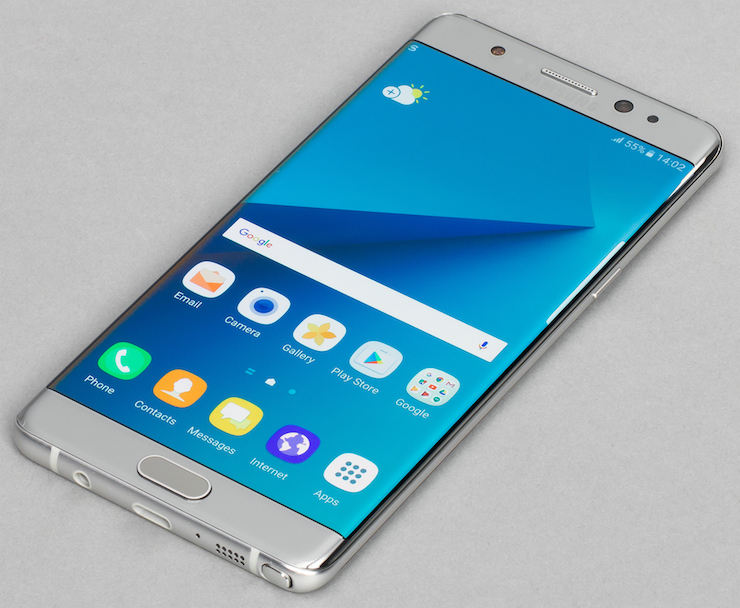
Almost the entire front panel is occupied by a screen that effectively wraps on both sides along the long sides. And this is not only that that delights in itself, but also creates the illusion of a complete absence of the frame on the sides. In fact, of course, there is a frame, but the sides are already quite thin, and thanks to the rounding of the screen, they seem quite insignificant. True, unlike the S7 Edge, the rounding here is slightly less, and the metal edges, on the contrary, are wider. In the photo below, the S7 Edge lies on top of the Note7, and the difference in bezel thickness is clearly visible.
Is it convenient or not? Our editor Andrey Vorobyov, who has been using the Samsung Galaxy S7 Edge as his main smartphone for six months, believes that it is convenient. Here is his opinion.
The Note7 feels like the side bezels are flat and wide by reducing the curves on both the front and back. As a result, the device is more confident in the hand. In terms of functionality, there is no deterioration compared to the S7 Edge, because both smartphones do not have the bend of the edges so that information can be placed only on them (separate from the main screen and without climbing on it, like the Samsung Galaxy Note Edge). Therefore, the wider or narrower part is not so important.
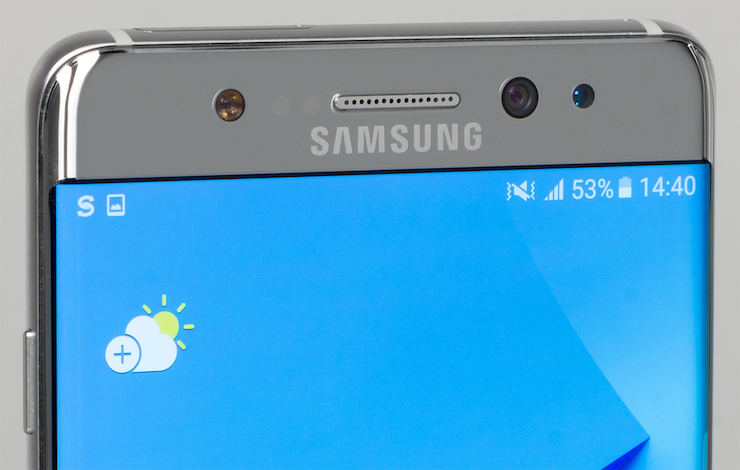
From the above photos, you can clearly see that the Note7's bend is really smaller. And it is hardly possible to use it as a functional element, that is, to place any controls on it. But here the main thing remains: the very fact of bending and the illusion of the absence of edges. That is why the device looks no worse, and is more comfortable in the hand. Like the S7 Edge, the edges are made of metal (more precisely, this is a full-fledged chassis, not just a border), and the front and back sides are made of plexiglass. Very stylish, but, alas, quite marco - prints on the back are collected instantly.
All faces, like their predecessor, are made of metal, buttons are also. They are pressed with pleasant elasticity. The location of buttons and connectors is similar to the previous model. On the right is the power button, on the left are separate volume buttons. On the bottom there is a speaker, a USB Type-C connector with OTG support, a 3.5 mm headset jack and a built-in microphone hole. In our review of the S7 Edge, we complained that Samsung, unlike its competitors, is not yet equipping its flagships with a USB Type-C connector. And now - there is nothing to complain about :)

Of course, in addition to the changed connector, the rear tip of the stylus is striking in the photo of the bottom edge. In order to pull it out of the smartphone, just press a little. The stylus is just as easy to insert and secure into the smartphone. The manufacturer emphasizes that the stylus can write even when the smartphone and stylus are submerged in water. We did not undertake such risky experiments, but we admit that the overall impression of the stylus is the best. It distinguishes between pressing force, allows you to perform small strokes.
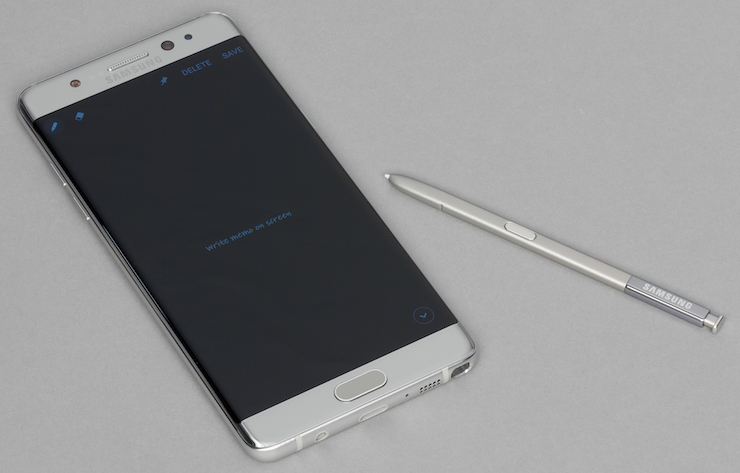
The upper edge of the smartphone contains a combined slot for a memory card and two SIM cards in the Nano-SIM format. You can use either two SIM cards or one SIM and one microSD card at the same time.

Compared to the S7 Edge, there is only one difference: the microphone has been moved closer to the edge.

There will be three color options available: Dazzling Platinum (gold), Titanium Silver (Metallic) and Black Diamond (Black). We tested the silver titanium version and, I must say, are satisfied with the color, although it has one caveat: if the lighting is yellowish (for example, in the case of ordinary incandescent lamps), then the smartphone also looks yellowish.
Security
One of the main features of the Samsung Galaxy Note7 is the iris scanner. Although smartphones with this option are slowly starting to appear on the market, it is still a gimmick, and we were all the more interested in how one of the leaders in smartphone manufacturing implements it.
Let's say right away: the results exceeded all our expectations. And everyone who saw the work of the scanner said one thing: "Wow!". The beauty of the technology is that recognition occurs almost instantly, in most cases it is error-free (it feels like about 90% of successful unlocks on the first try), and at the same time you do not need to hold the smartphone at any certain distance (that is, of course , it cannot be held too close to the face or, conversely, too far, but the permissible range is very large).
Another significant point - correct work scanner in different lighting conditions. In the dark - no problem, in the bright sun - too.
Finally, third: the use of an iris scanner does not at all negate the possibility of using a fingerprint scanner. That is, you can alternate the type of unlock depending on the situation. At some point it is more convenient to raise the phone to eye level, at some point it is easier to put your finger on.
However, all this is the protection of the upper level, and at the lower one it is still a pin code or a pattern. So if, for example, you do not have a reliable enough pin code, then the iris scanner will not make your smartphone more secure, because if it fails, the attacker can always try to guess the password. Probably, it would be advisable in the future to make the possibility of using biometric protection as a basic option as more difficult to hack. That is, in any case, the user would have to use one of two options - either one or the other scanner. It is clear that there is concern: what if finger recognition does not work (this happens with all smartphones)? But for this case, there is now an iris scanner. And vice versa.
Returning to the description of the iris scanner in the Samsung Galaxy Note7, we note only one drawback: in order to start it, you need to press the power button and slide your finger across the screen, that is, do two actions (or even three, if lifting the smartphone is counted as a separate action at eye level). Whereas to unlock with a fingerprint, just one press with the right finger on the Home button is enough.
Screen
The front surface of the screen is made in the form of a glass plate with a mirror-smooth surface, resistant to scratches. Judging by the reflection of objects, the anti-glare properties of the screen are better than that of the Google Nexus 7 (2013) (hereinafter simply Nexus 7). For clarity, here is a photo in which a white surface is reflected in the turned off screens (on the left - Nexus 7, on the right - Samsung Galaxy Note7, then they can be distinguished by their size):
![]()
The screen of the Samsung Galaxy Note7 is slightly darker (brightness in the photos is 113 versus 116 for the Nexus 7) and does not have a pronounced shade. The doubling of reflected objects in the Samsung Galaxy Note7 screen is very weak, which indicates that there is no air gap between the layers of the screen. Due to the smaller number of boundaries (such as glass / air) with very different refractive indices, screens without an air gap look better in conditions of intense ambient light, but their repair in the case of cracked outer glass is much more expensive, since the entire screen has to be changed. The outer surface of the Samsung Galaxy Note7 screen has a special oleophobic (grease-repellent) coating (effective, slightly better than that of the Nexus 7), so fingerprints are removed much easier and appear at a slower rate than in the case of regular glass.
When the white field was displayed in full screen and with manual brightness control, its maximum value was 350 cd / m², the minimum was 1.5 cd / m². You also need to take into account the fact that in this case, the smaller the white area on the screen, the lighter it is, that is, the actual maximum brightness of the white areas will almost always be higher specified value... As a result, readability in the daytime in the sun should be enough good level... The reduced brightness level allows you to use the device without any problems even in complete darkness. Automatic brightness control works according to the light sensor (it is located to the left of the slot of the front speaker). The operation of this function depends on the position of the brightness control, by which the user can try to set the desired brightness level in the current conditions. If you set the brightness slider to maximum in an office environment, then in complete darkness the auto brightness function reduces the brightness to 7.7 cd / m² (a bit dark), in an office lit with artificial light (about 550 lx) sets it to 350 cd / m² (excessively bright) , in a very bright environment (corresponds to lighting on a clear day outdoors, but without direct sunlight - 20,000 lux or slightly more) increases to 520 cd / m2 (sufficient), and conventionally in direct sunlight, the screen brightness increases to 570 cd / m2 ( information will be discernible). If everything is the same in office conditions, the brightness slider is at half the scale, then the screen brightness for the four conditions indicated above is as follows: 7.7, 130, 495 and 570 cd / m² (the first value is low). If the dimmer is set to minimum - 1.4, 1.4, 350 and 540 cd / m² (now the first two values are too low). The result did not satisfy us, so we moved the slider first by 50% in the office, then slightly to the right of the minimum in complete darkness. Received - 10, 170, 535 and 560 cd / m² (perfect combination). It turns out that the automatic brightness control function works adequately and to some extent allows the user to customize his work for individual requirements. At any brightness level, there is significant modulation with a frequency of about 60 or 240 Hz. The figure below shows the dependence of brightness (vertical axis) on time (horizontal axis) for several values of brightness adjustment:
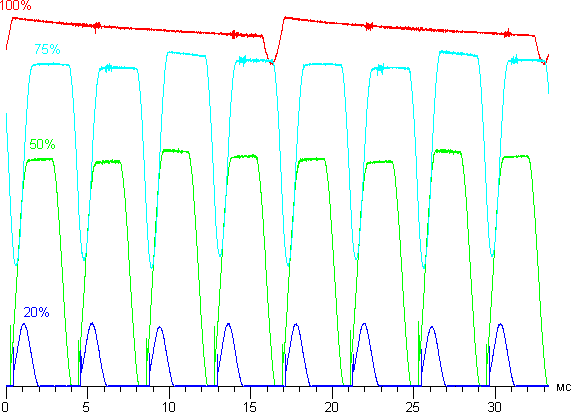
It can be seen that at the maximum brightness and close to it, the modulation amplitude is not very large; as a result, there is no visible flicker. However, when the brightness decreases, modulation appears with a large relative amplitude, and the presence of such modulation can already be seen in the test for the presence of a stroboscopic effect or simply with rapid eye movement. Depending on individual sensitivity, such flickering can cause increased fatigue.
This screen uses a Super AMOLED matrix - an active matrix on organic light-emitting diodes. A full color image is created with subpixels of three colors - red (R), green (G), and blue (B), but there are twice as many green subpixels, which can be referred to as RGBG. This is confirmed by a fragment of a micrograph:

For comparison, you can see the gallery of photomicrographs of screens used in mobile technology.
In the fragment above, you can count 4 green subpixels, 2 red (4 halves) and 2 blue (1 whole and 4 quarters), while repeating these fragments, you can lay out the entire screen without gaps and overlaps. For such matrices, Samsung has introduced the name PenTile RGBG. The manufacturer considers the screen resolution for green subpixels, for the other two it will be two times lower. The location and shape of the subpixels in this version is close to the case of the screen and some other newer ones. Samsung devices(and not only) with AMOLED screens. This PenTile RGBG variant is better than the old one with red squares, blue rectangles and green subpixel stripes. Nevertheless, some uneven contrast borders and other artifacts are still present. However, due to the very high resolution they have minimal impact on image quality.
The screen has excellent viewing angles. True, when deviated even at small angles, the white color alternately acquires a light blue-green and pinkish tint, but the black color remains simply black at any angle. It is so black that the contrast setting is not applicable in this case. When viewed from a perpendicular view, the uniformity of the white field is excellent. For comparison, here are the photos on which the screens of the Samsung Galaxy Note7 (profile Basic) and the second comparison participant displayed the same images, while the brightness of the screens was initially set to about 200 cd / m2, and the color balance on the camera was forcibly switched to 6500 K. White field:

Note the excellent uniformity of brightness and color tone of the white field (except for the darkening and hue change towards the curved edges). And the test picture (profile Basic):

The color rendition is good, the colors are moderately saturated, the color balance of the screens is slightly different. Note that in this case the picture occupies in height (with this screen orientation) the entire area available for displaying the image and goes over the curved edges of the screen, which leads to darkening and color distortion. Also, in the light, these areas almost always glare, which further interferes when viewing images displayed in full screen. And even the picture of films with an aspect ratio of 16: 9 goes into the folds, which greatly interferes with watching a movie. The photo above was taken after selecting a profile Basic in the screen settings, there are four of them:

Profile Adaptive display differs in some kind of automatic adjustment of the color rendition to the type of output image and the surrounding conditions, which is obtained when the two remaining profiles are selected, shown below.
AMOLED cinema:

Saturation and color contrast are noticeably increased.
AMOLED photo:

Saturation is slightly lower, color contrast is closer to normal. Now at an angle of approximately 45 degrees to the plane and to the side of the screen (profile AMOLED cinema). White box:

The brightness at an angle on both screens has noticeably decreased (to avoid severe darkening, the shutter speed is increased compared to previous photos), but in the case of Samsung, the drop in brightness is much less pronounced. As a result, with formally the same brightness screen samsung The Galaxy Note7 looks much brighter visually (compared to LCD screens), as the screen of a mobile device often has to be viewed from at least a slight angle. And the test picture:

It can be seen that the colors have not changed much on both screens and the brightness at the Samsung angle is noticeably higher. The switching of the state of the matrix elements is performed almost instantly, but at the turn-on front there may be a step with a width of about 17 ms (which corresponds to a screen refresh rate of 60 Hz). For example, this is how the dependence of brightness on time looks like when switching from black to white and vice versa:
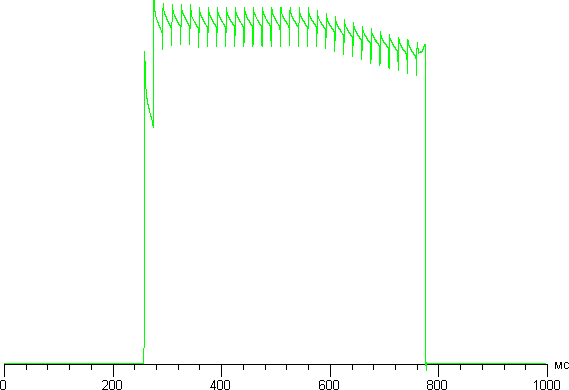
In some conditions, the presence of such a step can lead to plumes trailing behind moving objects. However, dynamic scenes in films on OLED screens are distinguished by high definition and even some "jerky" movements.
For all three profiles, the gamma curve plotted using 32 points with equal intervals in terms of the numerical value of the shade of gray coincided. There is no significant blockage neither in highlights nor in shadows, and the exponent of the approximating power-law function is 2.14, which is slightly less than the standard value of 2.2, while the real gamma curve deviates slightly from the power-law dependence (in the captions in parentheses, the exponent of the approximating power-law functions and coefficient of determination):
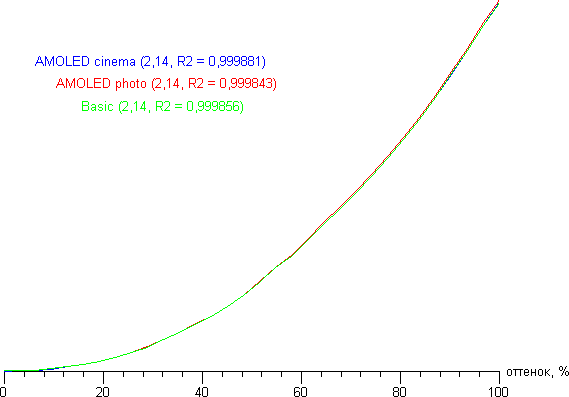
Recall that in the case of OLED screens, the brightness of image fragments dynamically changes in accordance with the nature of the displayed image - it decreases for generally light images. As a result, the obtained dependence of brightness on the hue (gamma curve), most likely, does not correspond a little to the gamma curve of a static image, since the measurements were carried out with sequential output of shades of gray on almost the entire screen.
Color gamut in case of profile AMOLED cinema very wide:
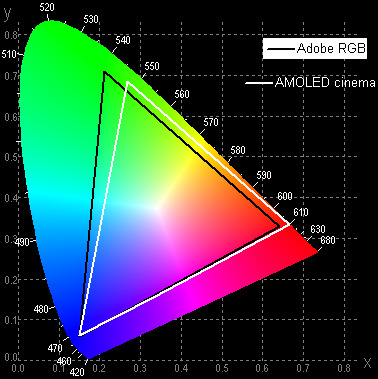
When choosing a profile AMOLED photo the coverage is compressed to the borders of Adobe RGB:

When choosing a profile Basic coverage is compressed to sRGB borders:

Without correction, the spectra of the components are very well separated:

In case of a profile Basic with maximum correction, the color components are already noticeably mixed with each other:

Note that normal sRGB-optimized images appear unnaturally saturated on screens with wide color gamut without proper color correction. Hence the recommendation - in most cases, watching movies, photos and everything natural is better when choosing a profile. Basic, and only if the photo was taken on the Adobe RGB setting, it makes sense to switch the profile to AMOLED photo... Profile AMOLED cinema, despite the name, the least suitable for watching movies and anything else.
The grayscale balance is good. The color temperature is close to 6500 K, while this parameter does not change very much in a significant part of the gray scale, which improves the visual perception of the color balance. The deviation from the blackbody spectrum (ΔE) for most of the gray scale remains below 10 units, which is considered a good indicator for a consumer device, and also does not change very much:
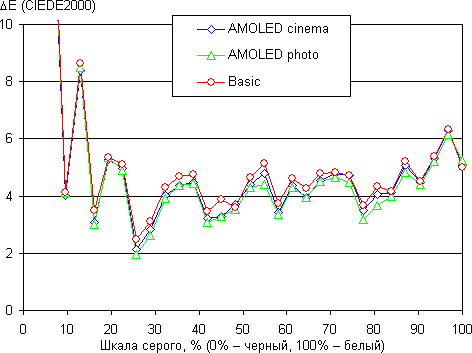

(In most cases, the darkest areas of the gray scale can be ignored, since the color balance there does not really matter, and the error in measuring color characteristics at low brightness is large.)
Let's summarize. The screen has a very high maximum brightness and has excellent anti-reflective properties, so the device can be used outdoors without any problems, even on a sunny summer day. In complete darkness, the brightness can be lowered to a comfortable value. It is permissible (and even necessary in bright light) to use the mode with automatic brightness adjustment, which works adequately. The advantages of the screen include an effective oleophobic coating, as well as a color gamut close to sRGB and a good color balance. At the same time, let's recall the general advantages of OLED screens: true black color (if nothing is reflected in the screen), excellent uniformity of the white field, noticeably less than that of LCDs, a drop in image brightness when viewed from an angle. The disadvantages include modulation of the screen brightness. Users who are particularly sensitive to flicker may experience increased fatigue due to this. However, the overall quality of the screen is very high. Separately, we note that from the point of view of image quality, curled edges only harm, since this design find introduces very noticeable color tone distortions and reduces brightness at the edges of the picture, and in ambient light conditions leads to inevitable glare at least along one long side of the screen.
Performance
The smartphone runs on the same Exynos 8890 Octa SoC as the Samsung Galaxy S7 Edge. The chip is made according to the 14 nm process technology, improved with FinFET LPP (Low-Power Plus) technology. It uses Mongoose CPU cores (four cores with a frequency of 2.6 GHz) and four Cortex-A53 cores with a frequency of 1.6 GHz that are already familiar to us.

The Mali-T880 acts as a graphics accelerator. Volume random access memory- 4GB same as S7 Edge. And an important detail: 500 MB of this 4 GB is reserved for the needs of the GPU, so in the benchmarks the amount of RAM in both smartphones is determined as 3.5 GB.

In our Samsung Galaxy S7 Edge review, you can find a detailed performance comparison of the Exynos 8890 Octa SoC with competing solutions. Here we will not focus on this and will focus on how to understand if there is any difference in performance between the S7 Edge and Note7.
Let's start with browser benchmarks: SunSpider 1.0.2, Octane Benchmark, Kraken Benchmark, and JetStream. On all Android devices, we have used Chrome browser, on iOS - Safari. If there is a dash in the table field, it means that the corresponding smartphone has not been tested in this benchmark (or in this version of this benchmark).
Small differences between the results of the two Samsung smartphones are well within the scope of the possible measurement error.
Now let's see how the gadget performs in complex benchmarks - AnTuTu 6 and Geekbench 3.
And again, an unambiguous picture does not work: in AnTuTu, the novelty overtakes the S7 Edge, and in Geekbench it is inferior to it. The situation is aggravated by the fact that the scatter of results is too large to be attributed to inaccuracy. However, let's not forget that the Note7 has newer software installed than the S7 Edge at the time of its launch, so this may explain the picture.
The last group of benchmarks is dedicated to GPU performance testing. We used 3DMark, GFXBench and Bonsai Benchmark. All of them show real 3D scenes and allow you to visually see how the devices cope with them.
Let's start with GFXBench. Recall that Offscreen tests are displaying a 1080p picture regardless of the actual screen resolution. And Onscreen tests are displaying an image in the resolution that matches the device's screen resolution. That is, Offscreen tests are indicative from the point of view of abstract SoC performance, and Onscreen tests - from the point of view of the comfort of playing on specific device... In addition, this year's Android devices used a new Car Chase scene that leverages OpenGL ES 3.1. This standard is not supported by the iPhone, so this scene is not available there, nor is the ES 3.1 version of the Manhattan scene. However, there is enough data to draw conclusions.
| Samsung Galaxy Note7 (Samsung Exynos 8890 Octa) |
Samsung Galaxy S7 Edge (Samsung Exynos 8890 Octa) |
Moto x force (Qualcomm Snapdragon 810) |
Apple iPhone 6s Plus (Apple A9) |
|
| GFXBenchmark Car Chase ES 3.1 (Onscreen) | 7.9 fps | 7.9 fps | 3.2 fps | — |
|---|---|---|---|---|
| GFXBenchmark Car Chase ES 3.1 (1080p Offscreen) | 15 fps | 15 fps | 5.1 fps | — |
| GFXBenchmark Manhattan ES 3.1 (Onscreen) | 15 fps | 24 fps | 10 fps | — |
| GFXBenchmark Manhattan ES 3.1 (1080p Offscreen) | 28 fps | 26 fps | 18 fps | — |
| GFXBenchmark Manhattan ES 3.0 (Onscreen) | 25 fps | 25 fps | — | 39 fps |
| GFXBenchmark Manhattan ES 3.0 (1080p Offscreen) | 38 fps | 38 fps | — | 40 fps |
| GFXBenchmark T-Rex (Onscreen) | 51 fps | 52 fps | 40 fps | 59 fps |
| GFXBenchmark T-Rex (1080p Offscreen) | 81 fps | 84 fps | 53 fps | 80 fps |
And here there is already an almost complete parity of the S7 Edge and Note7 (except for the strange loss of the new product in one of the modes).
And the last test is 3DMark. The Sling Shot on Android devices ran in OpenGL ES 3.1, and on iPhones - in OpenGL 3.0.
The abnormally high score in Ice Storm Unlimited is hard to explain, but it’s what it is.
In general, the benchmarks allow us to admit that the performance of the Samsung Galaxy Note7 and S7 Edge is approximately identical, and at the moment it is at the top level. At least until the release of the new iPhone.
Video playback
We could not check theoretically possible support for adapters for outputting an image to an external device due to the lack of an adapter option connected to USB port Type-C, so I had to limit myself to testing the display of video files on the screen of the device itself. To do this, we used a set of test files with an arrow and a rectangle moving one division per frame (see "Testing technique for video playback and display devices. Version 1 (for mobile devices)"). Screenshots with a shutter speed of 1 s helped to determine the nature of the frame output of video files with various parameters: the resolution varied (1280 by 720 (720p), 1920 by 1080 (1080p) and 3840 by 2160 (4K) pixels) and the frame rate (24, 25, 30, 50 and 60 fps). In our tests we used the MX Player video player in the "Hardware" mode. The test results are summarized in the table:
Red marks indicate possible problems related to the playback of the respective files.
According to the criterion for outputting frames, the quality of video files playback on the screen of the device itself is very good, since frames (or groups of frames) can be displayed with more or less uniform intervals of intervals and without frame drops. When playing video files with a resolution of 1920 by 1080 (1080p) on a smartphone screen, the image of the video file itself is displayed exactly along the border of the screen, going into the bends. The clarity of the picture is high, but not ideal, since there is no escape from interpolation to the screen resolution. However, for the sake of experiment, you can switch to one-to-one pixel mode, there will be no interpolation, but the PenTile features will appear - the vertical world through the pixel will be in a grid, and the horizontal one will be slightly greenish. This is on test worlds, the described artifacts on real frames are absent. The brightness range displayed on the screen actually corresponds to the standard range of 16-235: in the shadows, only a couple of shades merge with black, and in the highlights, all gradations of shades are displayed.
Autonomous work and heating
One of the most interesting questions in the case of flagships is the duration autonomous work, since, as we understand, the study of characteristics does not necessarily give an idea of this parameter. And even "laboratory" tests are not always indicative. That is why we used the Samsung Galaxy Note7 as the main and only smartphone and were able to estimate the battery life on our own skin.
Knowing that the battery capacity is slightly reduced compared to the S7 Edge, and the screen real estate is slightly larger, we feared that the phone would have to be charged more often than the S7 Edge. But in fact, we did not find any significant difference. Like the S7 Edge, the new product can work in medium-intensity mode for two days. Average intensity means the following: automatic mail check every 10 minutes (sometimes in addition to this - manual), frequent use of social networks and instant messengers (FB Messenger, Telegram, SMS), a certain amount of web surfing, irregular and short-term use of Yandex.Maps and Yandex .Transport, as well as about half an hour of telephone calls a day.
Obviously, if you add watching videos and 3D games to this list, the picture will change. But if for you a smartphone is primarily a working tool, then you can safely charge it no more often than every other night.
In addition to "real" testing, we also added our standard test modes: Guided Tour in the Epic Citadel benchmark (simulated 3D games) and YouTube video playback. And here the results are already less impressive. In Epic Citadel, the smartphone lasted only 3 hours 55 minutes - significantly less than many competitors. And when watching the video, the duration of the work was 12 hours and 50 minutes, which is also not a great result, but still acceptable.
Simply put, the Samsung Galaxy Note7 is more for everyday business use than gaming and entertainment. Probably, the SoC does not work very economically in the same games. As a result - strong heating and rapid loss of battery power.
Below are thermal images of the rear surface taken after 10 minutes of running the battery test in the GFXBenchmark program:

It can be seen that the heating is highly localized above the center and close to the right edge, which, apparently, corresponds to the location of the SoC microcircuit. According to the heat chamber, the maximum heating was 45 degrees (at an ambient temperature of 24 degrees), which is significantly higher than the average value in this test for modern smartphones.
Already when the article was written, a scandal erupted with exploding Galaxy batteries Note7. Fortunately, we did not have such incidents, but it is clear that the problem is serious. We hope that Samsung will be able to solve it, and there will be no problems by the start of smartphone sales in Russia.
In conclusion, we suggest watching our video review of the Samsung Galaxy Note7 smartphone and glasses virtual reality Samsung Gear VR:
In the second part of the article, detailed testing awaits you. Samsung cameras Galaxy Note7
Today the reason to write a review is very joyful, because I have a brand new Samsung Galaxy Note7 in my hands! I personally got to know each of the generations, and most of them even used as main smartphones, so I'm really curious how things are with each new Galaxy Note release. This is already the sixth acquaintance, but the number in the name is “seven” to equal the S7. Everyone, they forgot about it, no analytics, I just share my impressions about the device.
Specifications Samsung Galaxy Note 7
| Parameter | Meaning |
| Dimensions (edit) | 153.5 x 73.9 x 7.9 mm. |
| The weight | 169 g |
| OC | Android 6.0.1 Marshmallow |
| CPU | Exynos 8 Octa 8890 / Snapdragon 820 |
| Graphics | Mali-T880 M12 / Adreno 530. |
| Display | Super AMOLED, 5.7 ″, 2560 × 1440 pixels, 518 ppi |
| Memory | 64 GB ROM (UFS 2.0) |
| RAM | 4 GB (LPDDR4) |
| Cameras | Main - 12 MP OIS (f / 1.7), video recording in 4K, front - 5 MP (f / 1.7) |
| Interfaces | Wi-Fi 802.11 a / b / g / n / ac (2.4 / 5GHz), MIMO (2 × 2) 620 Mb / s, Bluetooth 4.2, ANT +, USB Type-C, NFC, microSD (combined), 3.5 mm audio jack. |
| Sensors | Fingerprint and iris scanners, gyroscope, geomagnetic sensor, barometer, heart rate sensor, proximity sensor, light sensor |
| Battery | Li-Pol 3500 mAh. |
Samsung Galaxy Note 7 video review
I already said that because the difference between the S7 Edge and the Note 7 is really small. This is a stylus, USB Type C, +0.2 "at the screen, minus 100 mAh at the battery, a new protective glass and an iris scanner. But with the Note 5, the differences are much greater. This is new hardware, a slot for a memory card or for a second SIM, new cameras, curved edges of the display, water resistance, it is 2 mm narrower, and most interestingly, the stylus is no longer inserted with the back side! Plus all the differences from the S7. So if you're wondering if it's worth changing last year's Note, yes, I would. But this is my personal opinion, protection from moisture costs a lot for me.

Design and arrangement of elements
The design is similar to that of other “sevens”: it is a metal frame and glass front and rear. But unlike the S-series, the glass on the front and back bends equally to the metal frame. Therefore, the smartphone is symmetrical.

However, I do not understand where they were aiming and in which symmetry system was the new USB Type-C connector inserted? It is somehow strongly displaced towards the bottom edge.

But the fact itself is very pleasing - for the first time Samsung has a USB Type-C connector. It's just epic cool! I really look forward to when there will be only one connector for everything in the world.
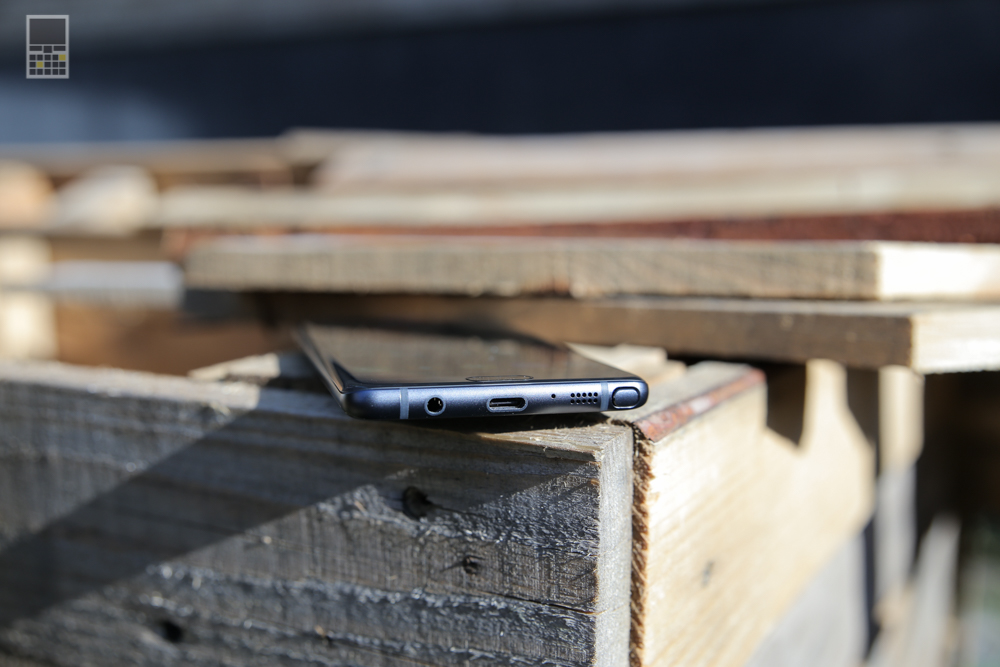
In terms of the arrangement of elements, everything is very similar to what we see in the S7 Edge, except that the S-Pen stylus has been added. However, some elements have changed. For example, I was pleased with the home key, it is now slightly recessed into the frame and practically does not protrude from the case. This means the scanner won't scratch as badly as it used to.

The headphone jack is still in place, exhale, and a new window has appeared above the display. I will say a few words about him now.
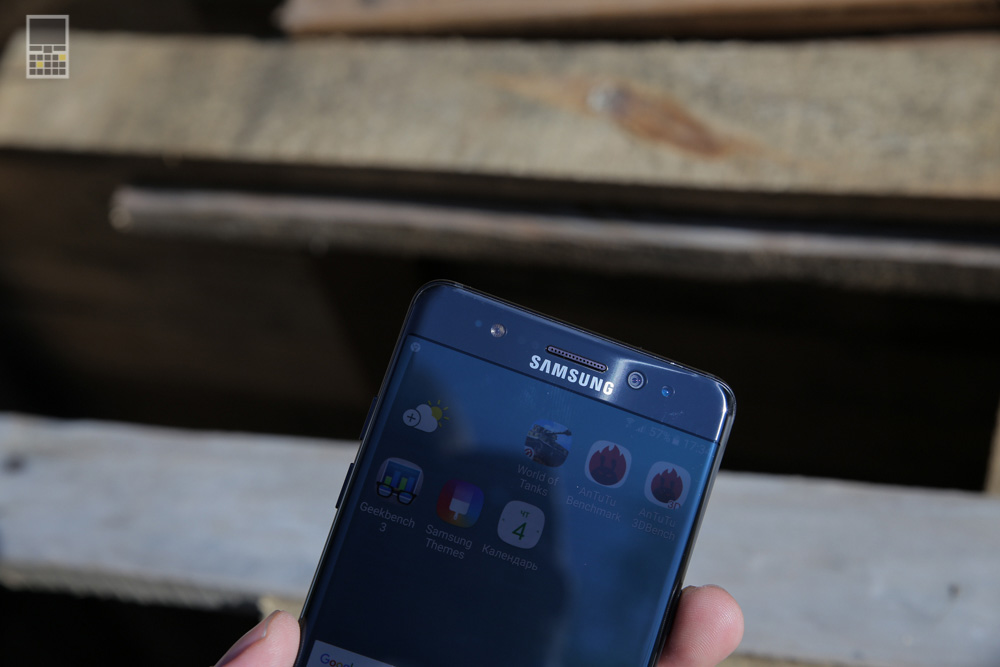
Iris scanner
In addition to the fingerprint scanner, Note7 adds another layer of protection - the RO eye scanner. You add your eyes once, and then the smartphone unlocks by scanning them. And even in complete darkness. If you look evenly, it works very quickly, sometimes you don't even have time to notice how the scanner turned on. But in general - just a cool feature, it is unlikely to become a very popular way to unlock, like face unlock in Android.

Display
On paper, it seems that there are few differences from the SGS7 Edge at all - the screen is just 0.2 ″ larger. But in practice, we also have the new Gorilla Glass 5, as well as a different shape of the curves on the sides. This is the most important difference that makes the Note7 much easier to use than the S7 Edge. There are a minimum of false presses on the verge, although they still happen, it is more convenient to hold it in your hand.

The rest of the characteristics are similar: Quad HD resolution, Super AMOLED matrix. The picture remains perfectly readable in the sun, and in general the display leaves the most pleasant impression. This is most likely the most advanced screen on mobile devices at the moment.
S-Pen
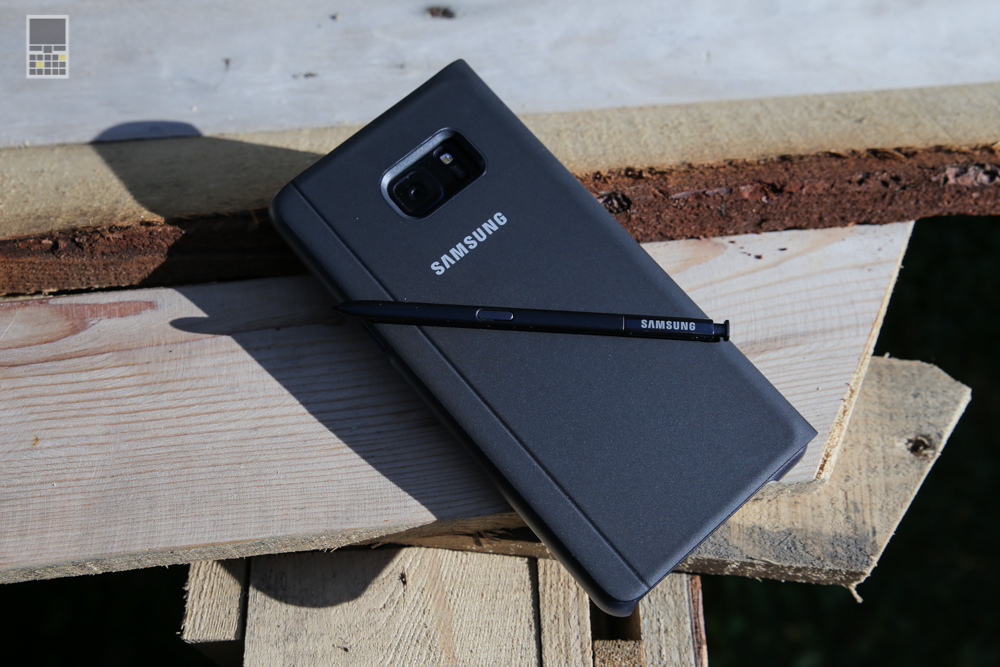
Electronic S Pen it became a little better hardware. In particular, the thickness of the rod itself has almost halved - to 0.7 mm, and the pressure gradations are now recognized up to 4000. This is twice as much as in the two previous generations, but it hardly helps you, as it seems to me.

But some software pieces are more pleasing. Most of all, I liked the ability to make a GIF from any highlighted area, be it a menu interface or some kind of video. Here's what happens:

Also, the pen can serve as a magnifying glass (I can't imagine the use cases, to be honest), all the previous chips remained. I don’t remember if this was possible before, but there is definitely an icon for adding a new item to the drop-down fan of the stylus. And a whole shop for adding items.
Cameras
Neither the main nor the front camera have changed at all in comparison with the Galaxy S7 / S7 Edge: the main one is 12 MP, f1.7, pixel size 1.4 microns, optical image stabilization, video shooting up to 4k resolution; frontal - 5 MP, video shooting at 1440p.

Therefore, both photos and videos are exactly the same, but I still made some sample photos for you with the Galaxy Note7.
Sample photos
But the standard camera application has undergone dramatic changes, it has become more similar to that of the Huawei P9. In the latter, I consider the standard camera application to be the best among all that is on the market, now the camera is very convenient in tachwiz. By swiping from left to right, the main camera modes are called, from right to left - filters (it would be better to have settings, they are still called by an icon), and a swipe from bottom to top or vice versa changes the camera. The change happens very quickly. In general - offset.
Features and software
In terms of hardware, everything is identical to the S7 / S7 Edge: Exynos 8890 with or Snapdragon 820, 4 GB of DDR4 RAM, 64 built-in, expandable with a card up to 2 TB, although such does not exist, the battery capacity is 3500 mAh. The performance is clear, it is the same as in the S7, but the autonomy should theoretically be worse, because the display is larger and the battery capacity is less. But judging by personal feelings, the difference is not noticeable. A smartphone will definitely be enough for a day of operation.
But TouchWiz has been updated again, it is very different even from what is now in the S7 / S7 Edge. And this is not bad, updates are, on the contrary, cool. I don’t understand the other: these updates do not always reach other, still actual models. For example, I'm not sure if the new touchwiz will arrive on my S7 Edge. And it's sad that Samsung is using software updates as a tool to lure customers away, there is always a feeling that you are no longer with such a cool smartphone. I hope I was wrong here and the update will arrive soon. And changes can be traced here and there. For example, a secure protected folder has appeared to hide content from prying eyes, an optimization item has appeared in the already changed settings, in the curtain all items now have drop-down functional menus, and so on. Well done, just do the same for other smartphones!
Finally, the long-awaited Samsung Galaxy Note 7 saw the light. Much was known about this top-end phablet even before the presentation, but the manufacturer was still able to surprise the world community. At the moment, it is the most powerful and technologically advanced device in the world. The smartphone has a chic design, has the latest generation of hardware and offers the beloved experience of interacting with software using. But its advantages are by no means limited to this. This is the sixth device in the Note line, but apparently in order to make it better perceived by consumers, the Koreans decided to skip over the 6 in numbering. However, even without this, the novelty looks more than an attractive option for buying. Let's get acquainted with the characteristics and features of the seventh "Note" today.Packaging and delivery of the Note 7
The box confirms the top-end status of the hero of our review, because it looks very solid. It is made of solid black cardboard. As usual, there is the name of the model at the top and the key characteristics of the model at the bottom. Since it is a flagship, it comes with a rich set of accessories. Here, perhaps, there is everything that a modern user needs:- USB cable;
- headset;
- network adapter;
- a clip to open the nanoSIM + microSD compartment;
- adapter for microUSB port;
- OTG adapter;
- paper.
Appearance, ergonomics and display of the Samsung Galaxy Note 7
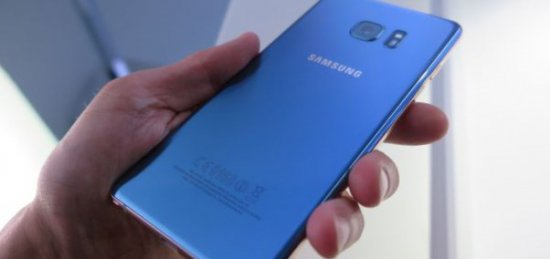

The fresh phablet in its appearance has retained the main features of its predecessor, thanks to which it is precisely the representative of the Note-line that is recognized in it. The design of the smartphone combines elements taken from the models and. In the previous model, only the rear panel was rounded, in the new product, both the front surface and the rear are equally rounded. Due to this, the impression of completeness is created, the appearance of the "seven" is pleasant and harmonious. Although the screen is rounded at the edges, it is not too much. Everything has been done just enough so as not to affect the convenience of handwriting, since the usable area for the S Pen with an excessive curvature of the screen will be less, and this is completely useless.
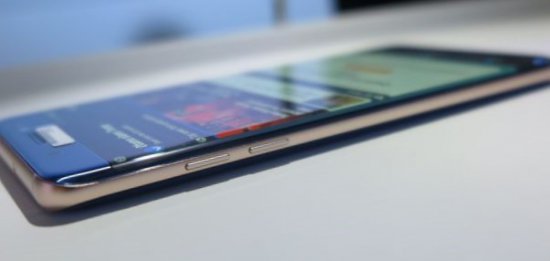

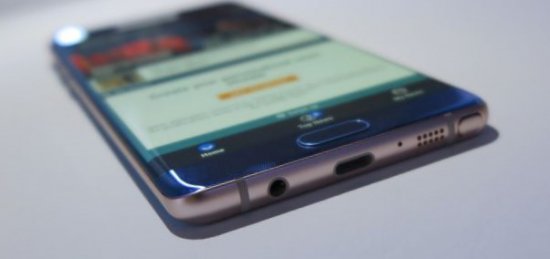
Despite the dimensions of the device, it is very convenient to use it, it lies just fine in the hand, since the body is noticeably narrowed. Like the latest flagships from the Korean vendor, the Galaxy Note 7 is made with glass and metal. The back is quite slippery, you can accidentally drop your smartphone if you are not careful. However, the cover completely corrects the situation. A freshly baked device can write protection against dust and moisture as an asset thanks to the presence of the IP68 standard. It can withstand depths of up to 1.5 meters, but only for half an hour.
All elements are in their usual places, the finger can easily find them. So, the lock button has found its place on the right edge, while the volume control is placed on the left edge. On the front, under the display, there is a physical key with a fingerprint reader inscribed in it and touch buttons navigation on the sides, everything is familiar. Above the screen we see a peephole, a notification indicator, an iris scanner, necessary sensors and a speech speaker. At the bottom there is a call speaker, a USB Type-C (USB v3.1) connector, a microphone, a 3.5 mm headphone jack and a niche for an S Pen. A second microphone and a hybrid tray for microSD and a SIM card or two SIM cards are placed on the upper edge. The dimensions of the device are 153.5 x 73.9 x 7.9 mm. Weight does not exceed 169 grams. There are five color types available - blue, gold, silver and black.


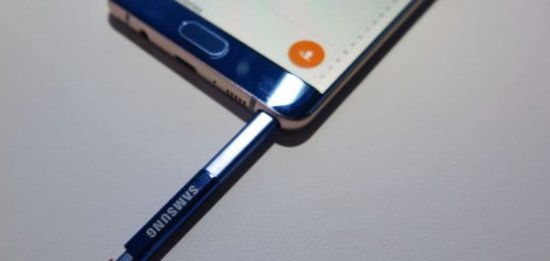
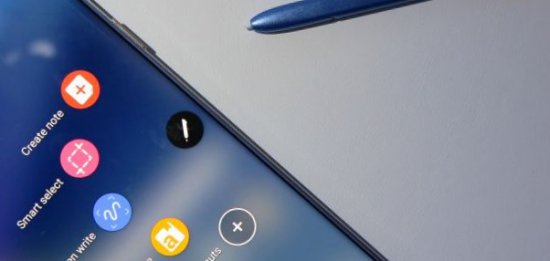
Phablet has got the best display at the moment with a size of 5.7 inches, occupying, by the way, 78 percent of the front panel. It is hidden under durable Gorilla Glass 5, based on the proprietary SuperAMOLED matrix, the resolution is limited to 2560 × 1440 pixels (Quad HD). Any visible pixels are out of the question, because their density per inch is 518 ppi. The brightness, viewing angles and brilliance are amazing. The color temperature can be adjusted to suit you. Although the screen is practically bezel-less, there are no accidental clicks. As in smartphones of the family, there is an Always-on-Display mode, so the clock and various information are displayed constantly. Many will appreciate the presence of the option "Filter Blue", using it, you can make the color gamut of the display warmer. As for the redesigned S Pen, the nib is now twice as thin for a more comfortable drawing experience. Also, the stylus now recognizes 4096 degrees of pressure.
Technical stuffing and autonomy of Samsung Galaxy Note 7
The "heart" of the device is the Exynos 8890 Octa processor. This 14nm chipset delivers outstanding performance. It includes four cores at 1.6 GHz and four at 2.3 GHz. Installed graphics module Mali-T880 MP12. RAM LPDDR4 has a capacity of 4 GB, and the built-in UFS 2.0 flash media is endowed with a capacity of 64 GB. The size of the memory card is unlimited. Such incredible performance will be enough for the next few years. In AnTuTu, the device has a corresponding result - about 145 thousand points. The device is equipped with the widest range of different sensors. For the first time in smartphones Samsung the iris sensor is used, which replaces the fingerprint sensor. The user can choose between these two unlocking methods. In addition, the Galaxy Note 7 has a gyroscope, barometer, Hall sensor, heart rate meter and compass. Of course, 4G LTE frequencies and navigation using GPS and GLONASS systems are supported. It is worth noting that it takes less than a second to unlock using the eyes, even if you are wearing glasses, just look at the screen. A very handy thing.![]()


The battery is non-removable, its capacity is 3500 mAh, which is 500 mAh more than the last year's model. Autonomy is good, as for a smartphone with a top-end filling. The battery allows you to operate the device for up to two days in active mode. For example, at maximum brightness, a video is played for about 20 hours. Energy saving function is provided. There is wireless charging. Not without a fast charging mode, half of the battery capacity is recruited in 20 minutes.
Samsung Galaxy Note 7 interface and cameras
This is the first product from the company to include the Grace UX framework. Everything here is noticeably simpler and easier than. Later, other flagships of the manufacturer will be updated to this firmware. Various new features have been introduced. The design is reminiscent of an upcoming release. Apparently the Koreans have redrawn the interface for the future "operating system", because in the future Galaxy Note 7 will switch from today's version to the seventh version of the "green robot".
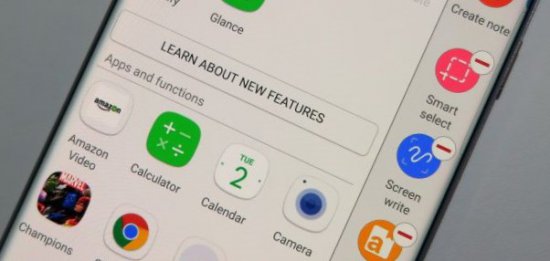

![]()
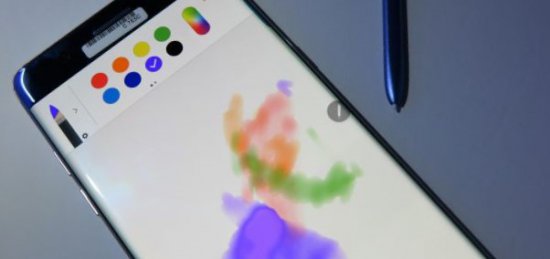
In terms of photo capabilities, the new product is almost identical. The quality of the images is just as great at night and during the day. However, the cameras have undergone some improvements. In particular, the changes affected the frame processing algorithm. Image stabilization has been improved and is now clearer when shaken. The main module is equipped with a 12 megapixel sensor with f / 1.7 aperture. There is phase detection autofocus, optical stabilization and a bright LED flash. It is possible to shoot videos in 4K format. The camera in front is endowed with a resolution of 5 megapixels, its aperture is f / 1.7.
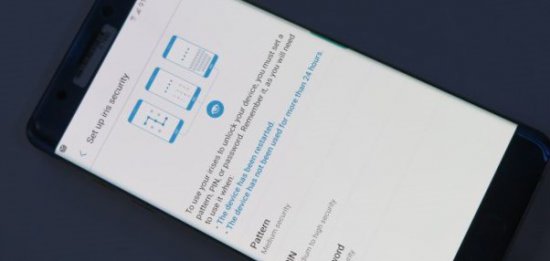

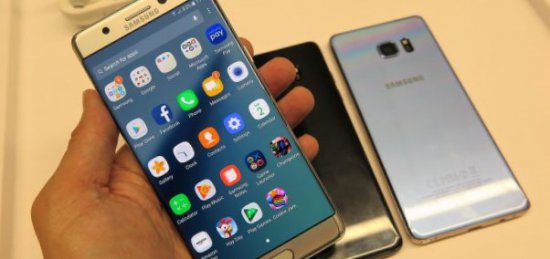

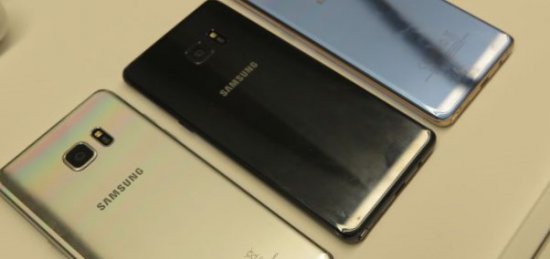
Output
The Koreans have managed to create a very tempting device that, of course, surpasses its predecessor. Although the changes are not so pronounced. The model turned out to be spectacular in appearance, very powerful and functional. I liked the presence of the iris scanner, which makes the Samsung Galaxy Note 7 even more attractive. Of course, it has every chance of becoming very popular all over the world. In Russia, the model will appear sometime in mid-September. The Note 7 price will be about 65 thousand rubles.




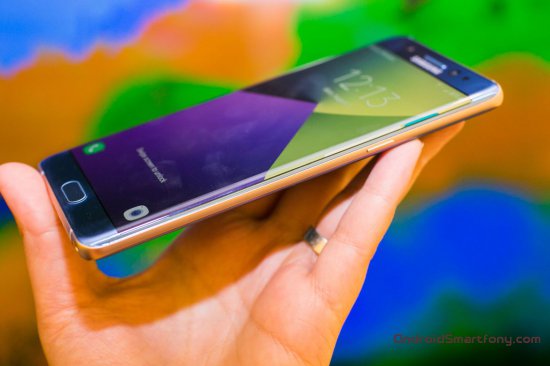

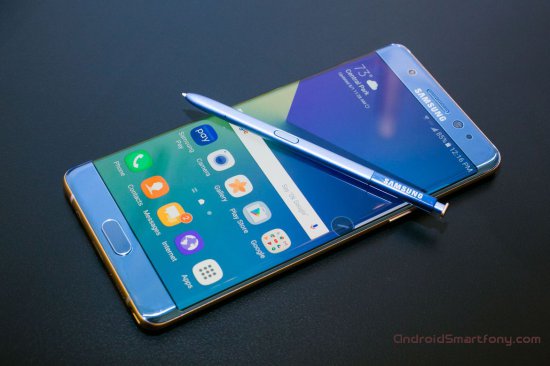
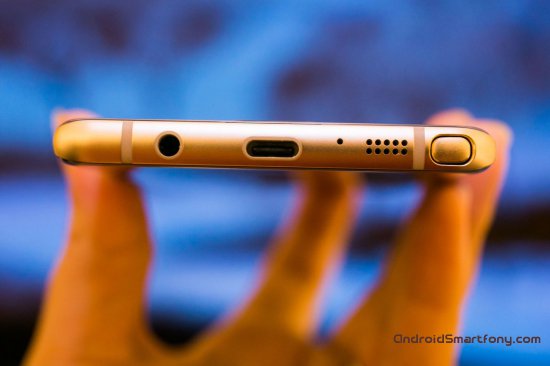


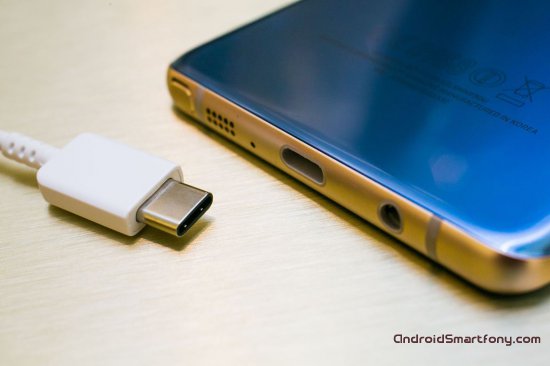
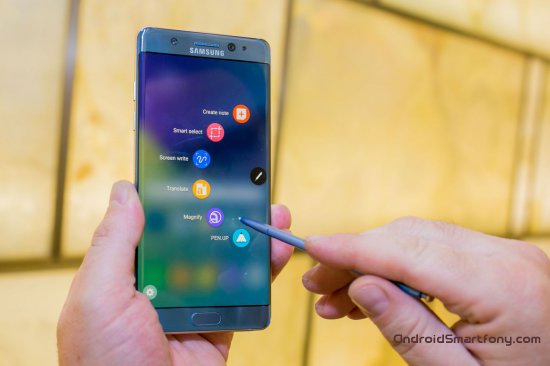
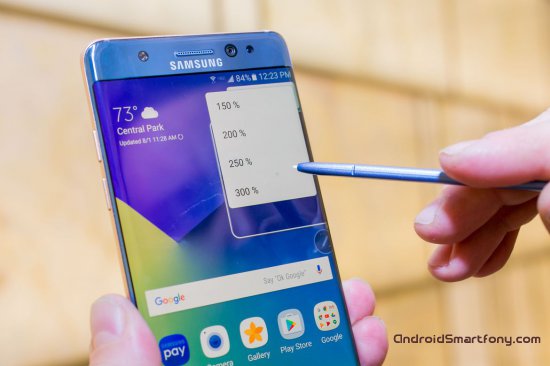
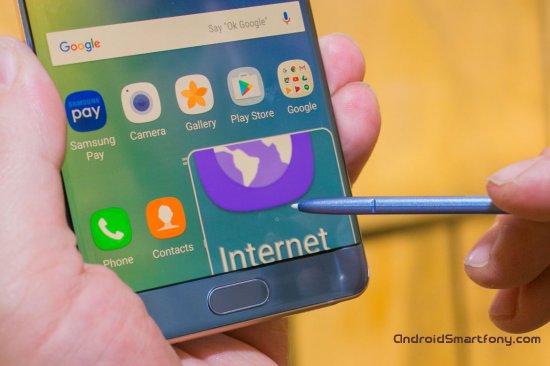



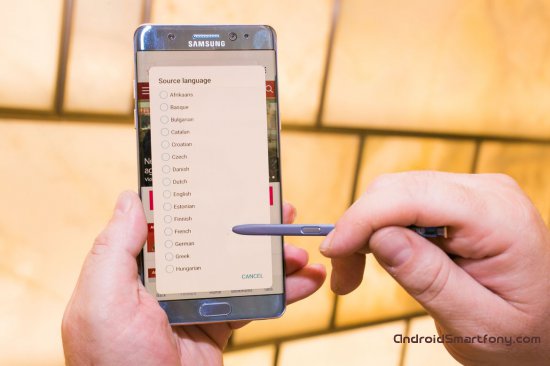

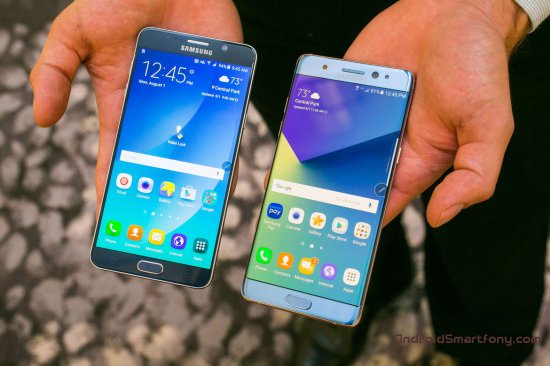
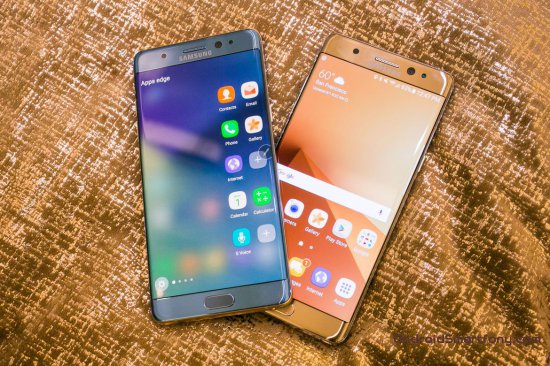



![]()
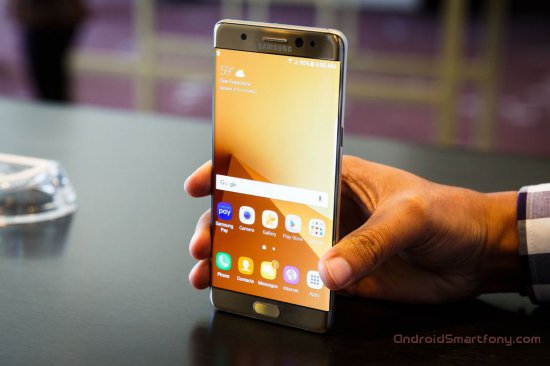

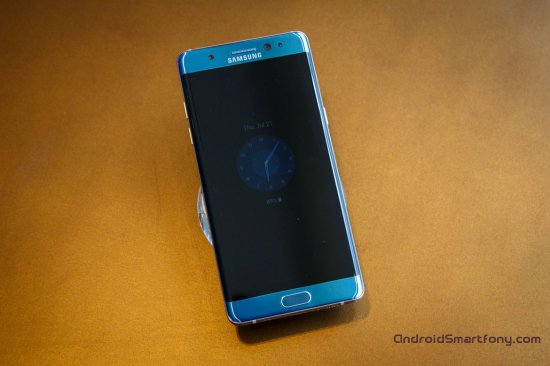
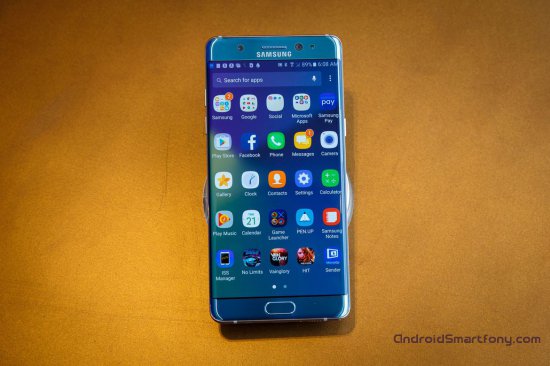
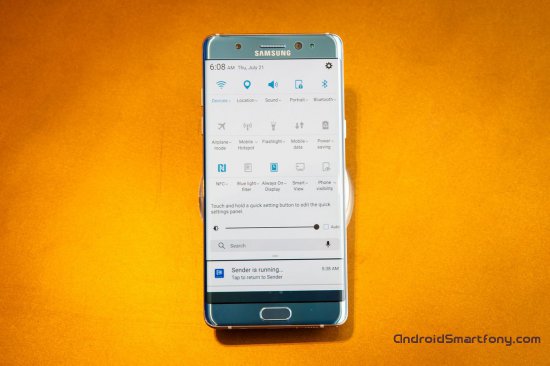
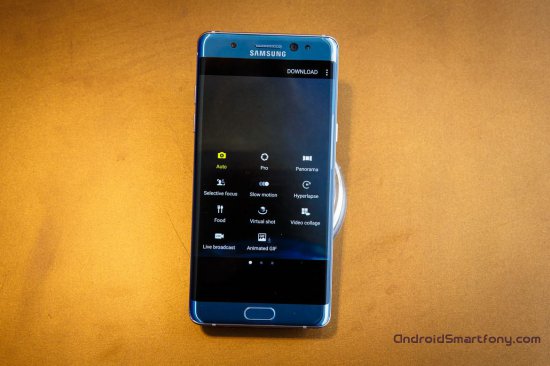
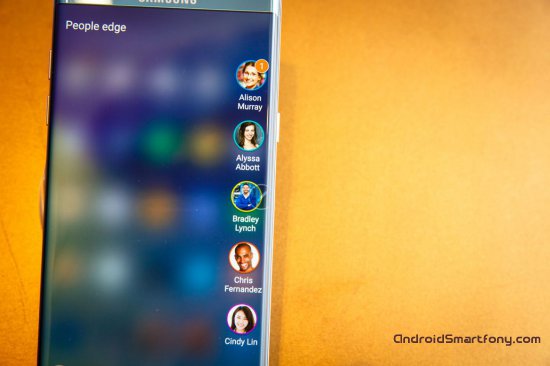

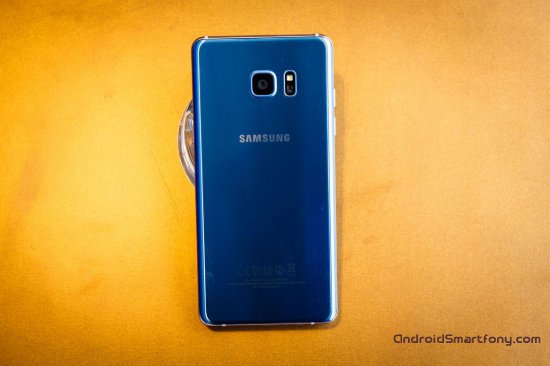
Specifications
- Android 6.0.1, Grace UI
- Display 5.7 inches, QHD-resolution 2560x1440 pixels (518 ppi), SuperAMOLED, automatic backlight adjustment, Always On function, different operating modes, Corning Gorilla Glass 5
- 4 GB of RAM, 64 GB of internal, memory card up to 256 GB
- nanoSIM (there will be options for 2 SIM cards, then the memory card in the combo slot will not be available)
- Exynos 8890 chipset, 8 cores up to 1.8 GHz per core, MALI T880 MP12 graphics coprocessor (Qualcomm Snapdragon 820 option available in some countries), 14 nm
- LTE cat12 / 13 support with software update, operator support is also required, by default LTE cat.9
- Front camera 5 megapixels, flash (screen), main camera BRITECELL, 12 megapixels, time lapse, slow motion, video effects, 4K video
- Dust and water protection IP68
- Latest generation fingerprint sensor
- Wi-Fi: 802.11 a / b / g / n / ac (2.4 / 5GHz), HT80 MIMO (2x2) 620Mbps, Dual-band, Wi-Fi Direct, Mobile hotspot, Bluetooth®: v4.2, A2DP, LE, apt-X, ANT +, USB 3.1, NFC
- Built-in wireless charging (WPC1.1 (4.6W Output) & PMA 1.0 (4.2W)
- Li-Ion 3500 mAh battery, extreme power saving mode, fast charge in one hour up to 70 percent
- Dimensions - 153.5x73.9x7.9 mm, weight - 169 grams
Contents of delivery
- Smartphone
- Wired stereo headset
- USB Type C to microUSB adapter
- Charger(Fast Adaptive Charge) with USB Type C cable
- USB Type C to USB adapter
- Instructions
- Clip for SIM tray
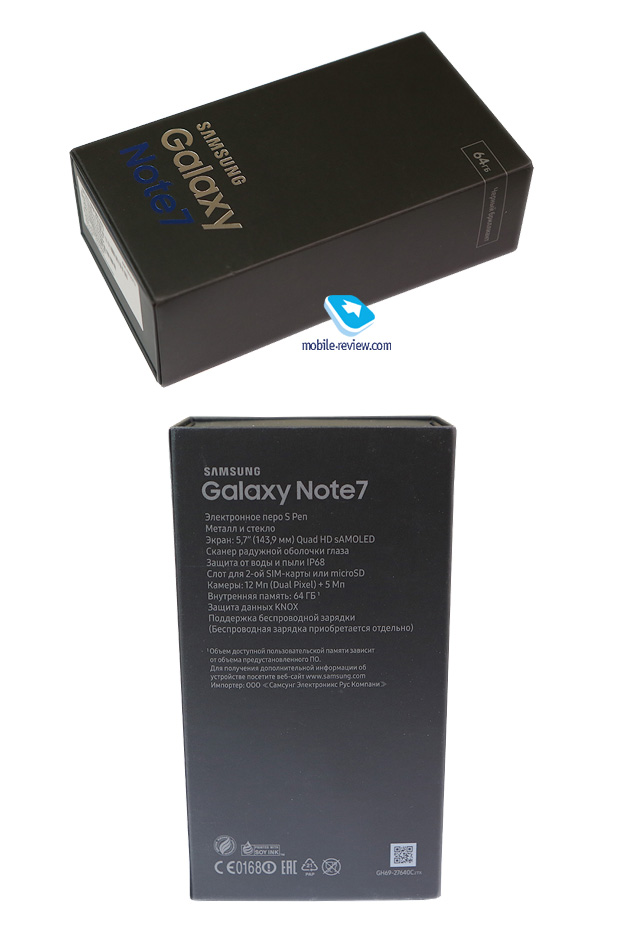
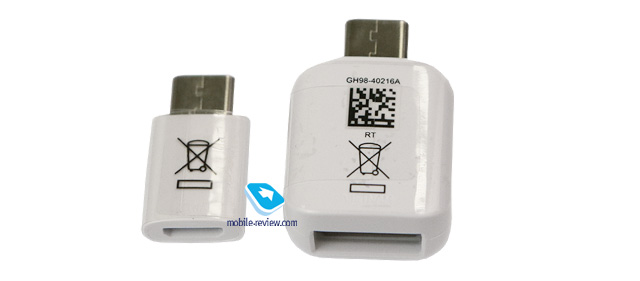
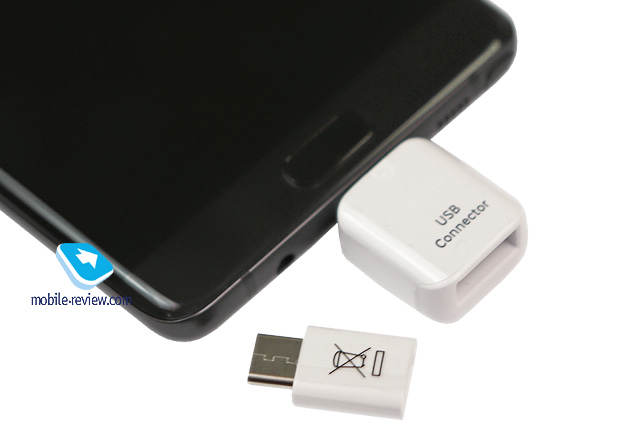

Positioning
An attentive reader should wonder where the sixth generation of Note has gone, because a year ago in August we discussed the Note 5, and then an unexpected leap to number seven. There are two reasons for such a decision, it is difficult to say which of them prevailed, I think their contribution is equal. First, the Galaxy line has always been one generation ahead of the Note, since they did not appear at the same time. These models come out with a difference of six months, usually Galaxy appears in March-April, Note in late summer-early autumn. And it turns out that there is a significant gap between them. But the main thing is that the later released Note model has an index one less. For example, after the appearance and start of sales of the Galaxy S6 of all variants, the Note 5 was released six months later, which for some buyers created confusion and created the perception of this model as something "old" that did not correspond to the flagship. The market for the Note line has long gone beyond the circle of tech enthusiasts, so, oddly enough, this factor plays a role. It will not be superfluous to recall that technologically Note has always surpassed the Galaxy line, for at least six months it remained the most powerful smartphone from Samsung.
Since 2016, both Samsung line are becoming the same in numbers, now the models will come out with the same index, so, in 2017 there will be a Galaxy S8, and later there will be Note 8. And if for Galaxy this will be the eighth generation of the device, then for Note only the seventh, but consumers are very worried about this issue will not.
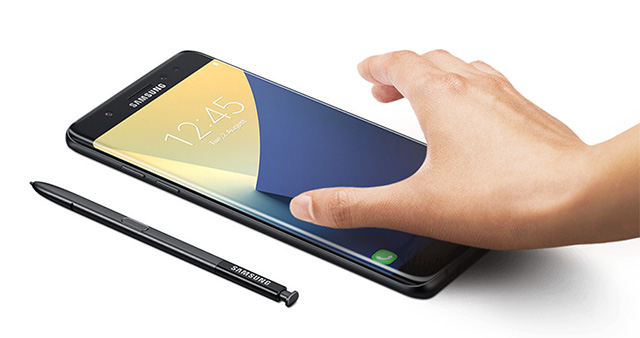
The second reason is indirect, but for marketers it plays a role. Have Apple the seventh comes out on the market in September iPhone generation which means that Samsung is also eliminating the difference in perception, both companies now have "the same" generations of devices. Is it good? In principle, this does not matter for the majority, this is again a curtsey towards a part of the audience, which understands absolutely nothing about phones, but judges by the numbers who is cooler. There are quite a few such people on the market, especially in Latin America, Mexico and countries in that part of the world, partly in the United States.
In August 2015, when Samsung showed the Note 5, it became clear that the future of the Note line was in doubt, the company decided to make the S6 EDGE + the main device, and the Note was sold and promoted on a leftover basis in most markets. It came out at the end of the year, that is, with a delay of several months, did not have the same support, it seemed that they wanted to quietly get rid of the Note line. Already in January it became clear that such steps by Samsung caused a very sharp reaction from buyers, they did not want the Note line to disappear and demanded that, as before, this line not only exist, but provide devices with the best engineering solutions. To the moment Galaxy announcement S7 / S7 EDGE inside Samsung has already decided that they will return everything to its original place and the next Note will become one of the key models for the company.
The positioning of this device looks simple - this is the most powerful model from an engineering point of view, which has a large margin of safety. It is curious that various forums are still discussing the fact that the Note 3 is so good that there is no point in replacing it with older models. It is clear that this is not entirely true, but in the perception of a noticeable number of people, the previous models of the Note line are not at all outdated and are in demand. For example, on trips, I often use Note 4, without experiencing any problems, this is quite modern smartphone both in terms of speed and Android version(costs 6.0.1). Over the past two years, this model has not passed much, it may well survive for at least another year, providing comfortable work. There are almost no models on the market with such a long life cycle, which at the same time would not become morally obsolete.

For those looking for the very best device without compromise, this model offers just such an option. But, again, unlike in previous years, the difference in technology with the same Galaxy S7 EDGE is uncritical or imperceptible for most buyers, many perceive the changes as cosmetic and do not deserve special attention. In some ways this is so, in others it is not.
Like any flagship from the A-brand, the Note 7 is worth it, however, we'll talk about this separately at the end of the article. Let's first focus on the main points related to this device, let's talk about the impressions of long-term use.
Design, dimensions, controls
With comparable dimensions, the differences in the ergonomics of the S6 and S7 were striking, the second fell into the hand like a glove, and the first, against its background, was perceived as an unfinished prototype. Having mastered this trick, Samsung engineers were able to repeat it in the Note line, the new flagship fits perfectly in the hand, although I had no particular complaints about the previous one. But the body was narrowed, and due to this and the beveled edges, it fits better in the hand. Many people who scolded the Note line for its size, having tried the S7 EDGE, somehow got used to it, saying that this device is excellent in ergonomics. It was he who was guided by when creating the Note 7. The dimensions of the Note 5 are 153.2x76.1x7.6 mm, the Note 7 is 153.5x73.9x7.9 mm. The other thickness of the case is not felt, but the fact that it is already is immediately clear. At the same time, a slightly smaller size does not bear any loss in performance.
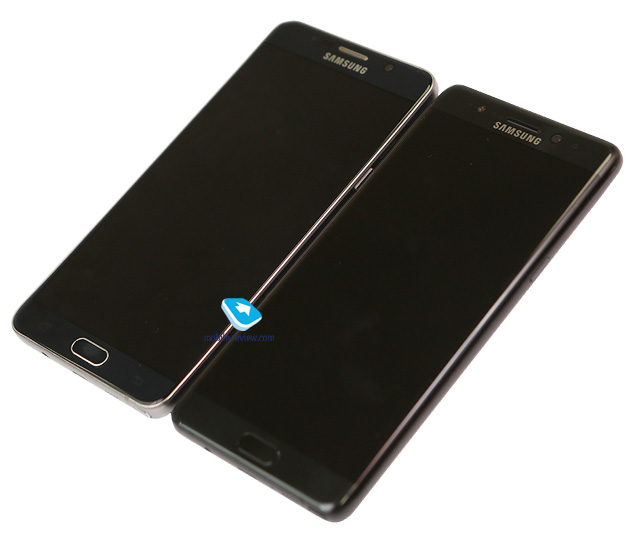
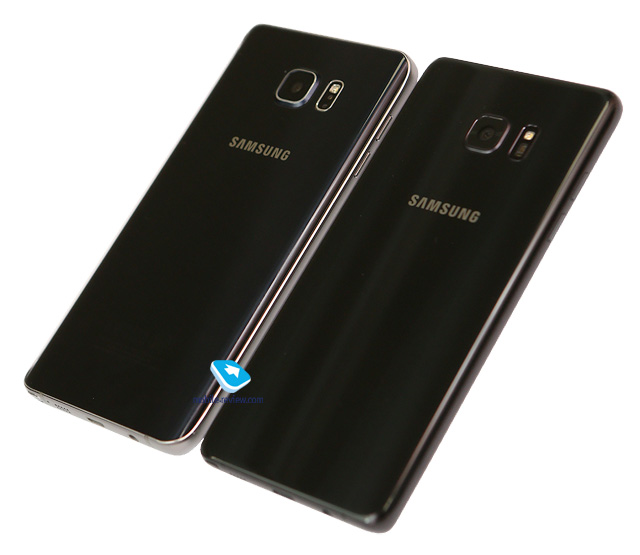

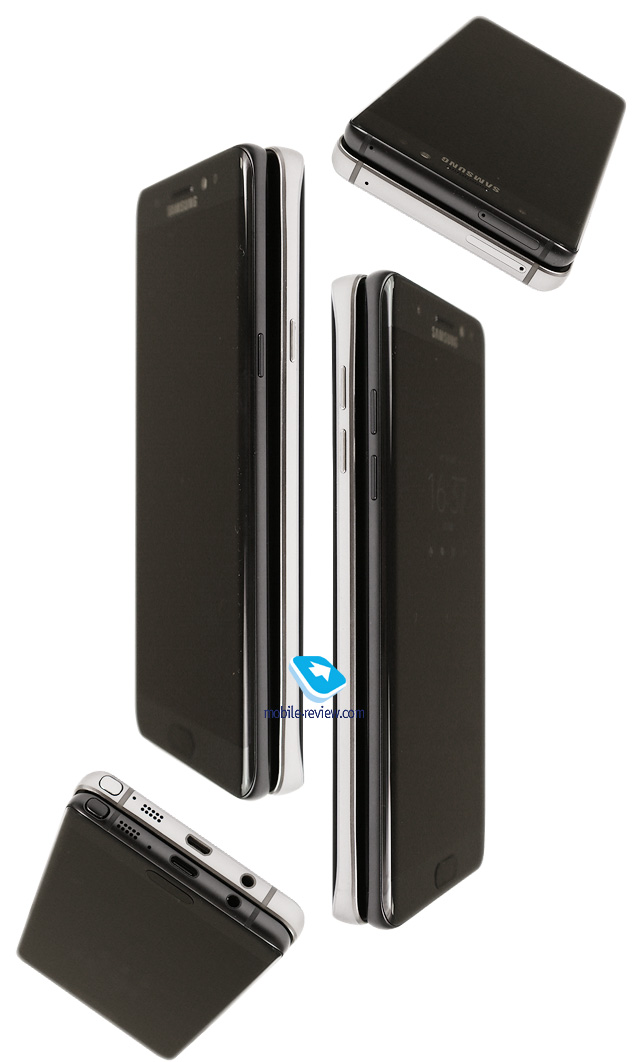
Compared to Galaxy Note 5
Very often I hear that people think certain phones are slippery. With the Note 7, there is no such problem anywhere, except for water. Climbing into the Atlantic Ocean to photograph the waves swirling, I got a few great photos, but the wave easily knocked the phone out of his hands, and he set off on his last voyage. It is interesting that for a day and a half it was possible to observe on the map how the device moved along the coast, the signal from it passed from time to time. I suppose that sometimes he was lifted from the bottom by a wave, and then he managed to transmit his coordinates. But it was not possible to find it in the water. The conclusion is simple - when entering the water with the Note 7, hold it tightly or use a case to prevent the device from drowning.
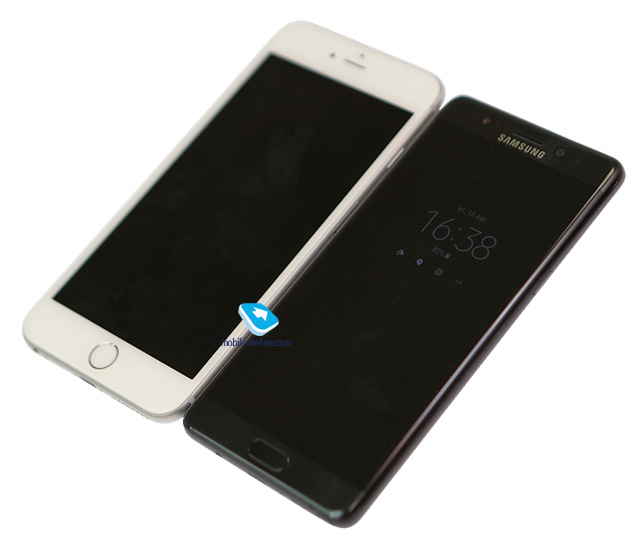

Compared to iPhone 6S Plus

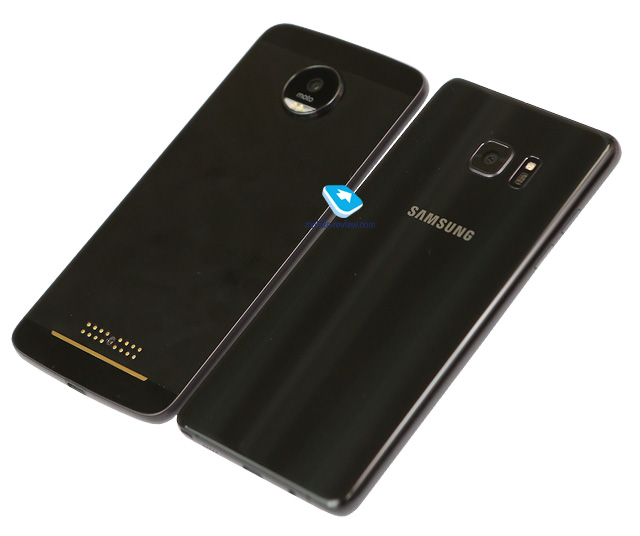
Compared to Moto Z
One of key features all Note up to five had collapsible cases and the ability to independently change the battery. Unfortunately, this device has a monolithic body, the battery can be replaced only at the service center, which, however, is not a problem, the procedure is standard and takes a few minutes. Of course, if next to you there is service center... We will talk about the battery separately, I will not get ahead of ourselves here, although for many the phrase "battery in Note 7" already evokes a certain associative array.
Just like in S7 / S7 EDGE, water protection is added, IP68 standard is supported. You can swim with your phone, drop it into the water, and in most situations it will be empty. Watch a video of how the S7 behaves in a water tank.
As well as for the S7 / S7 EDGE, an advanced protection technology was applied here, when the connectors detect if there is water in them, and refuse to charge when it is detected. But, unlike S7 / S7 EDGE, the screen cover has been redesigned (glass is still the same Corning Gorilla Glass 4+, it is also called Gorilla Glass 5 for the rest of the market), now the press is more accurately recognized when the screen is wet.

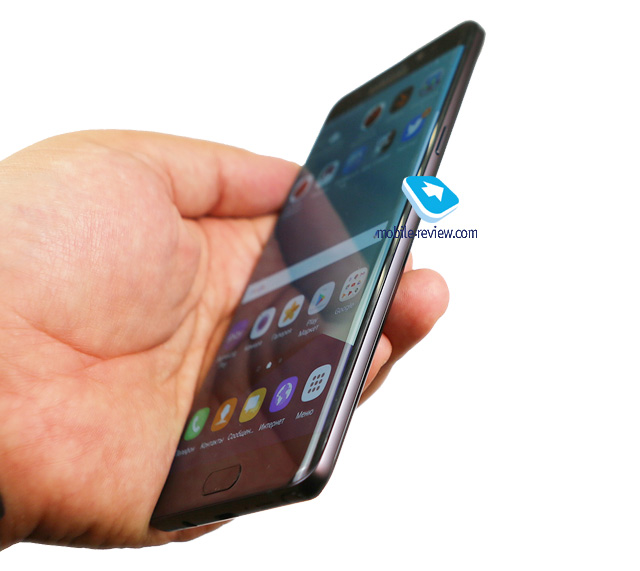
But that's not all, the S Pen has become smaller, but now it can work both in water and under water (why the latter is needed, a big question for me, but perhaps someone will find a use for this technology).
The slot is retractable, there is a place for microSD card memory, combined slot (either two SIM-cards, or a memory card). It is possible that in some markets Note 7 will be promoted as DUOS, then the inscription on the case will say about it. But structurally, these devices do not differ in any way, they are the same.


Four body colors, a familiar design that does not impress with anything. Blue devices are not supplied to Russia.

The most popular color is black (black onyx - Black Onyx), it accounts for most of the sales in all countries of the world, it was also the leader in pre-orders in Russia, it is about 80% of the total volume. I also like this color and have chosen it. Gold color (Gold Platinum) is easily soiled, there are handprints on it, and they are clearly visible in the room. Silver (Silver Titanium) is not so easily soiled, but peculiar, it will not suit everyone. Oddly enough, the blue device looks good, it is a little livelier than the similar color in the Note 5.
External changes include replacing the microUSB connector with USB Type C. The S7 EDGE prototypes were equipped with the same connector, but at the last moment they abandoned it, believing that there would be no benefit from using it. In this model, it is installed, it is USB 3.1 (not 2.0), that is, the data transfer rate will be maximum.
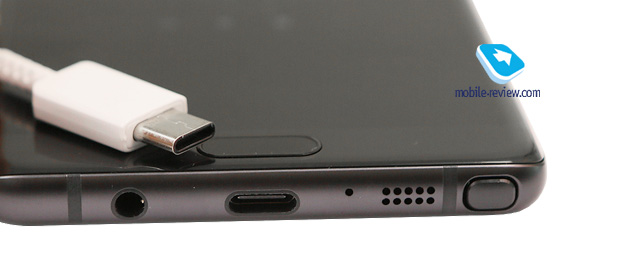
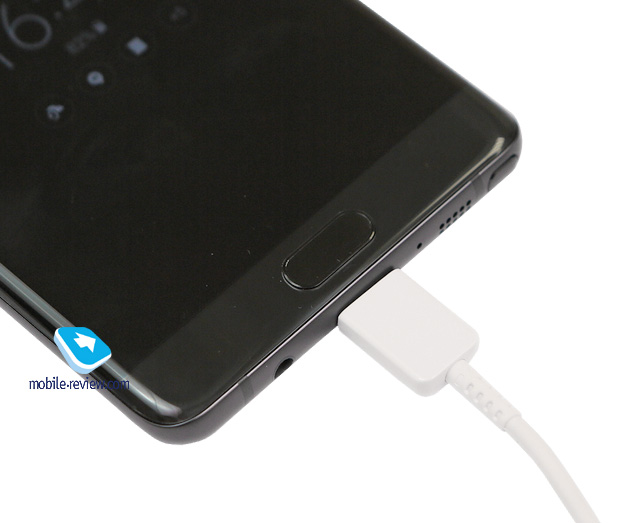
Of the minuses that migrated from the previous generation to the Note 7, I will note the painting of the metal mesh of the speaker, it will begin to peel over time (about six months of completely negligent attitude). In the photo you can see my S7 EDGE.


The same is true for the Note 7, the process has not been changed in any way, although the company knows that this problem exists. The second weak point is the fingerprint sensor, which is covered not even by Corning Gorilla Glass, but by plastic. In 4-5 months, the plastic is wiped off, and an ugly stain appears, like the one on my S7 EDGE. The same goes for the Note 7.
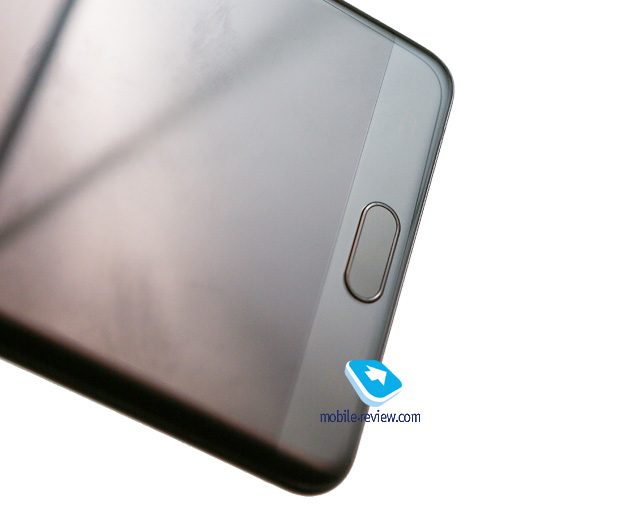
These two shortcomings are very frustrating, as they make the phone old and make it a little messy after six months, especially if you peer rather than glance at it. In the same Apple iPhone button with a sensor is covered with sapphire, which guarantees the preservation appearance... Why Samsung cannot do exactly the same thing is not clear to me.


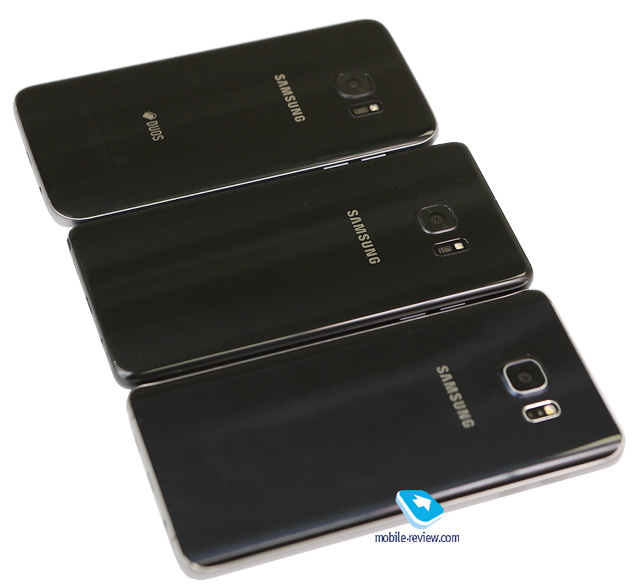
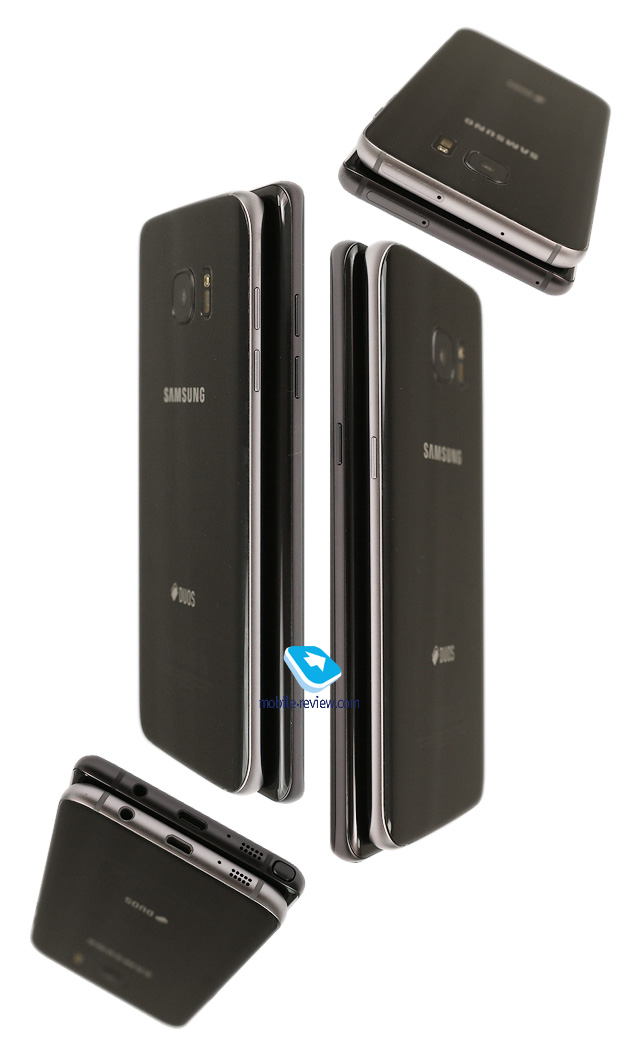
Compared to Galaxy S7 Edge
Unlike Note 4, which uses a system of three microphones, this device has only two of them, they are placed on the ends. The noise cancellation system works perfectly during a conversation, the missing third microphone removed from the recorder the ability to record a conversation at a round table when there are several interlocutors, but the "Interview" mode remains, it works decently.
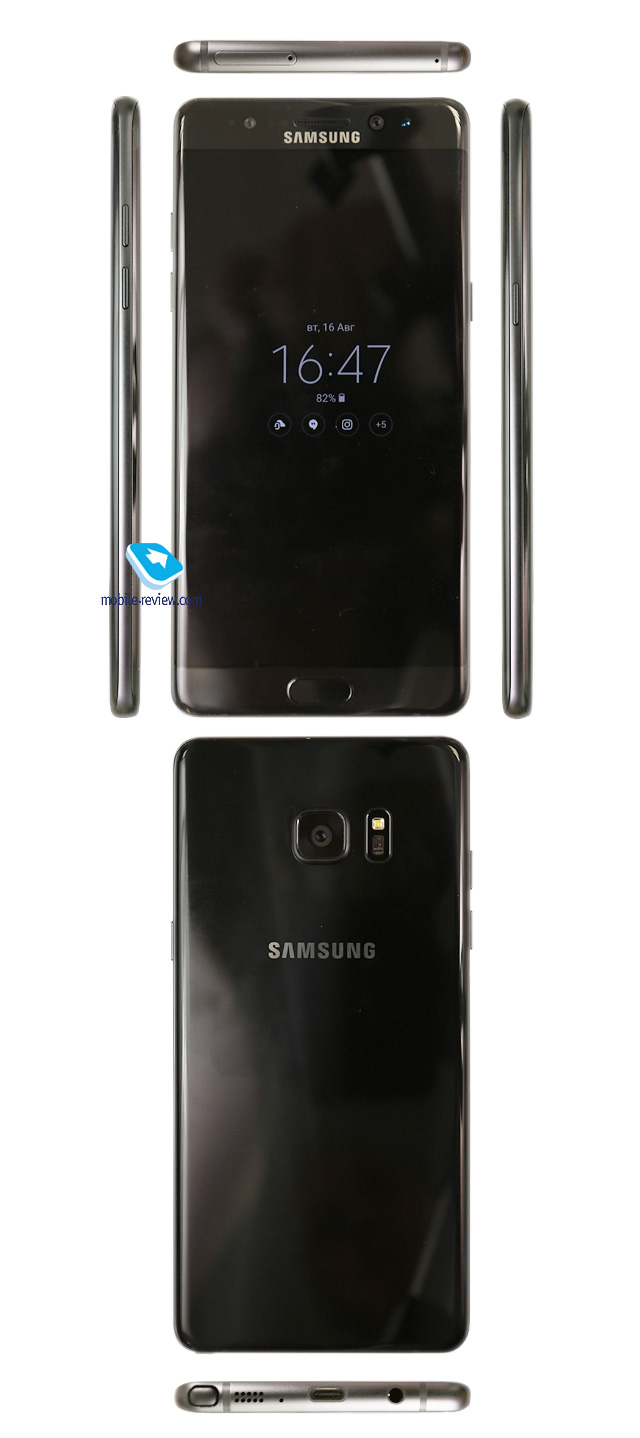
On the front, there is a proximity sensor, lighting, an iris scanner, and a 5-megapixel selfie camera, all above the screen. The central key is mechanical, with a fingerprint sensor, it works by touch. For some reason, this key is often pressed in my pocket, its size has been changed compared to the S7 EDGE. Although this does not always happen and not for everyone, it has happened to me in certain situations. But overall, this does not pose a discernible problem.
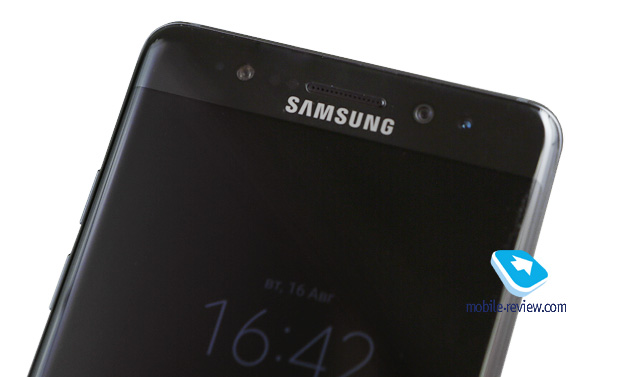
Display
The display has a diagonal of 5.7 inches, a QHD resolution of 2560x1440 pixels (518 ppi), this is the latest generation of SuperAMOLED. Back in the days of the S6, it seemed to me that it would be difficult to improve on the screens, but Samsung refutes these expectations every time. So, just like in S7 / S7 EDGE, the Always On mode has appeared, when a clock and icons about missed events are displayed on the screen. The logic has been slightly changed, now, in addition to notifications about calls and SMS, you can see icons of different applications, including colored icons. Another point, if you write a note on the screen, then by clicking on its icon on the Always On display, you will see this note, which is convenient.

The algorithm for working in the sun has been changed, the device gives more natural colors. In general, we can say that Samsung took their ideal screen of the previous generation and made it even more colorful and better. Plus you can change the color gamut as you see fit, giving you a wide range of colors. Or adapt the screen to automatic mode... The algorithm for teaching your preferences has become a little smarter, it learns faster what kind of backlighting and in what situations, programs you prefer.

Display Mate tested Note screen 7 and called it a work of art and the best screen among all mobile devices, a full debriefing from them can be read.
And I would like to dwell on a few points. Firstly, the brightness of the backlight during automatic adjustment has increased to 1000 nits, which gives a very bright and clear picture in the sun, no phone can do that, including the S7 / S7 EDGE. In the bright sun in the camera mode, this is clearly visible.
Secondly, a video enhancement mode has appeared, in fact, this is an HDR mode for videos where this option is not initially available. But if you want to watch HDR-encoded videos on your phone ( HDR mode from 4K TVs), then you can do it, this option is supported for the first time on mobile device... Of course, for the majority, this will be another chip that they will never get to know, and here Samsung is running ahead of the locomotive. But it's safe to say that other companies will use the same approach in the future. At the moment, there is practically no such content that can be viewed using this option.
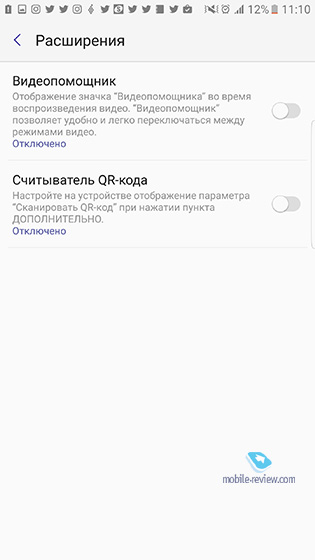
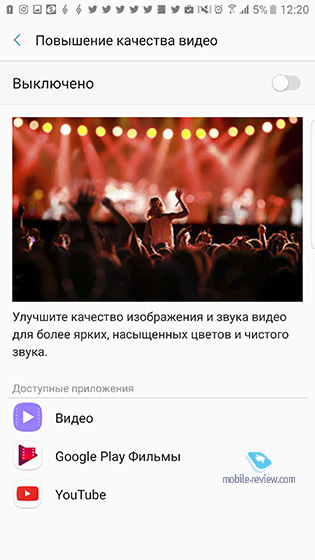
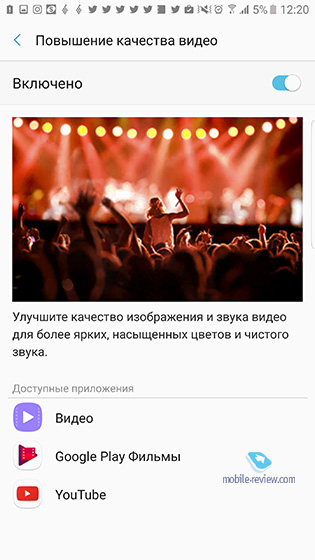

From the point of view of the quality of the screen and picture, the possibility of its customization for each individual person, this is the best device on the market, which has no direct competitors. The flagships of other companies are good, but they do not work the same in all lighting conditions, but here you get the best possible both in the sun and indoors. In short, it is truly a work of art.
Now a few words about the side faces, for them the curvature of the bend was changed, and this managed to achieve the fact that there were noticeably fewer false positives. They didn’t pester me on S7 EDGE, but sometimes they happened, here there are an order of magnitude less of them.
You can familiarize yourself with how the side edge works, what you can do with it and what applications to install.
Now let's focus on the new generation protective glass- Corning Gorilla Glass 5. A video appeared on the network in which, using tools calibrated according to the Mohs scale, a person showed that at level 3 new glass from Corning could be scratched, while the fourth generation scratched only at 5-6 levels.

Corning refuted these words, indicating that the glass in terms of scratch resistance remained at the same level as the previous generation, it changed its resistance to falls (survival in 80% of cases when falling from 1 meter to 60 centimeters). This is true, and it is extremely difficult to break the device, but it is possible if desired. This device crashed after a dozen falls from such a height.
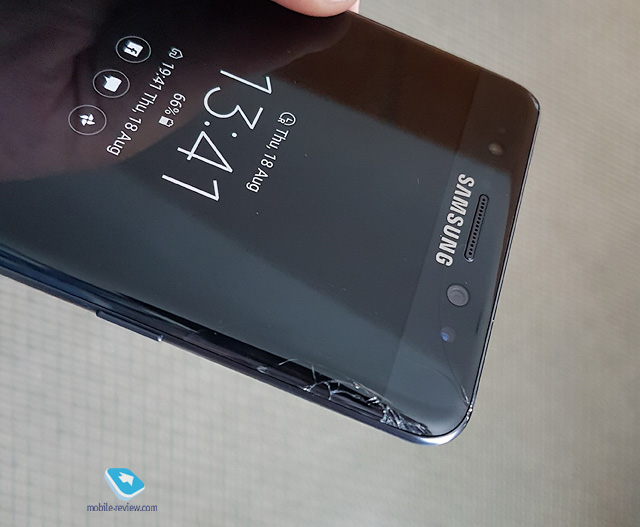
There are no reasons not to believe Corning or the author of the video, but it turns out to be a very contradictory situation. Is the screen scratching or not? In our video, for comparison, I scratched both S7 EDGE and Note 7 with a knife, in the end I scratched exactly the S7 EDGE. Does this prove something? Absolutely nothing. For example, in a pocket with sand, both the first and the second are guaranteed to be scratched.
For more than a month with my device, with very careless handling of it (carried it with keys, threw it in the sand, and so on), it received small, invisible scratches on the screen, and this happened only after a beach pastime. In all other situations, the screen proved to be no worse than that of the previous model. People who are worried about the appearance of small scratches that are visible only up close, are not felt with a finger, do not affect the quality of the picture display, surprise me. I am sure that they are trying to change the bumpers in their cars for insurance, if a small, barely discernible scratch appears there. Forgetting that the bumper is designed to be covered with scratches and serve as protection. I don’t want to convince anyone, but I’m sure that after two or three years of using the phone, there will be no serious problems with its screen from the point of view of scratches. The problem is very contrived and akin to the bending iPhone in the back pockets, there is no practical sense for consumers. For those who are worried and shaking for their screen, there are mineral glass stickers that will protect the display. But I think it's stupid to glue the protection onto the protection, it's like wrapping a suitcase at the airport in plastic in order to preserve its appearance. The only purpose of the film is to prevent thieves from getting into your suitcase, but keeping the look of your suitcase is a utopia. Although different people have different views on this issue.
Memory, RAM, memory cards, chipset, performance
Initially, it was assumed that this device will receive 6 GB of RAM and a new mechanism for allocating memory depending on the load will be used. But it was decided to give it up and leave this technology for 8th or even 9th generation devices. At the request of Google, since the company did not have time to make the necessary add-ons in Android and wants all flagships to get this opportunity within one year.
The total amount of RAM is 4 GB. This is enough for all tasks. The memory type has not changed, it is LPDDR4 (10 nm process technology). Very often people complain that after the smartphone is loaded, a small amount of RAM is available, which shows a complete ignorance of the issue and how memory is allocated in Android. The occupied memory does not affect the performance of the system in any way, the ability to perform certain tasks. Therefore, the very parameter of how much memory is occupied is useless for evaluating something, it says absolutely nothing.
The minimum amount of pre-installed memory becomes 64 GB, plus microSD memory cards of any size are available (Samsung guarantees the operation of memory cards up to 256 GB). They say that some operators will sell versions for 128 GB, but this is exotic, the vast majority of devices will be released on 64 GB.
Now a few words about chipsets. The device comes in two versions, for the American market and a couple of operators outside of it - on Qualcomm Snapdragon 821 ( maximum frequency- 2.3 GHz, a bunch of virtual parrots in Antutu). For most of the world, the device will be released on Exynos 8893, the frequency here is up to 2.7 GHz, with less heating and longer operating time, plus better camera algorithms and energy saving. The difference in operating time between these chipsets under the same load can reach 20-25 percent. Of course, it all depends on your scenarios for using the device, but, nevertheless, this is a rather tangible difference. The Qualcomm version is a tribute to the US market and carrier choice.
The performance of the solution remains high, it is one of the most powerful smartphones, as you can see if you look at the results of synthetic tests. They do not reflect real productivity in life, and it will be enough for anyone's eyes. No lags, slow work, and the like.

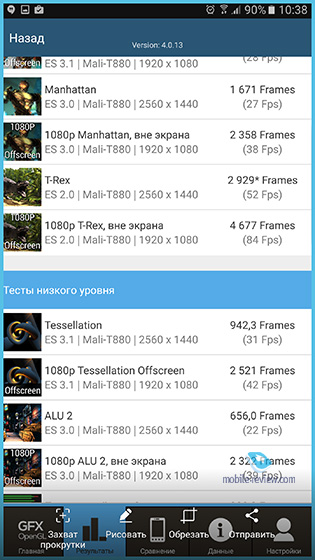

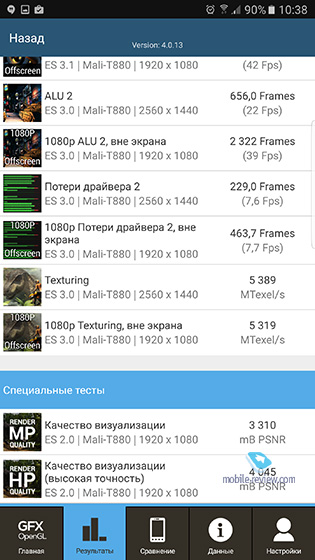

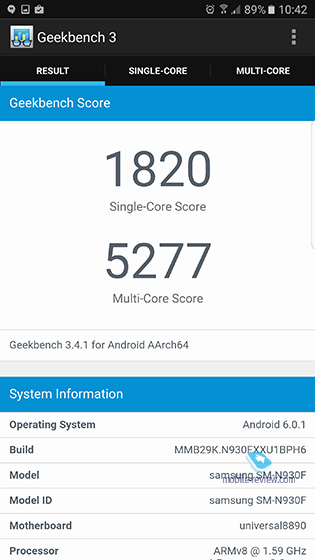
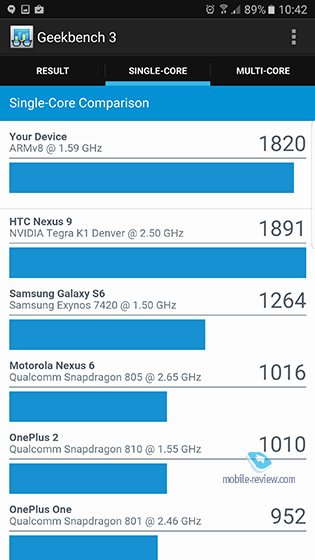

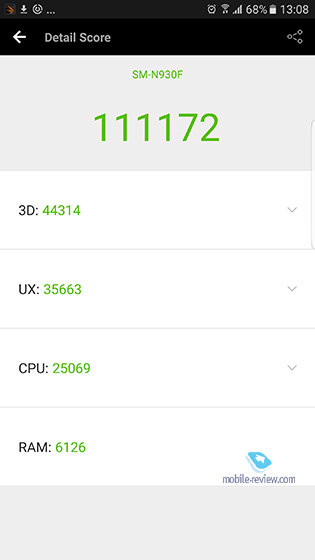

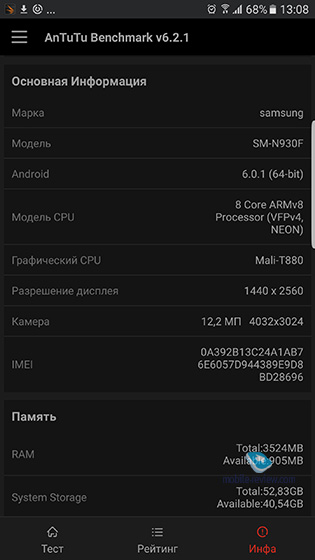

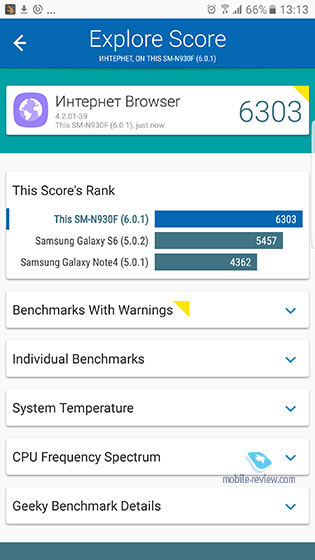
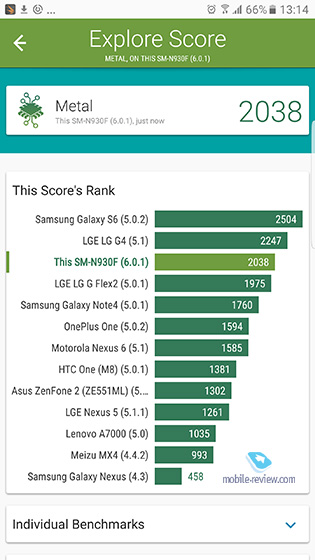


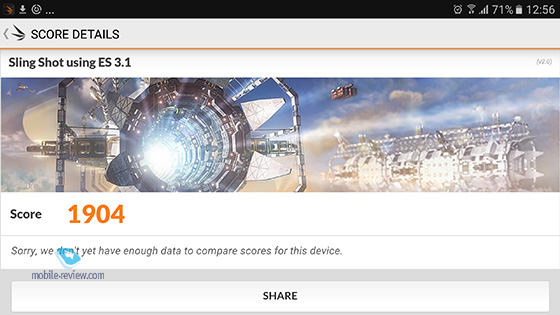
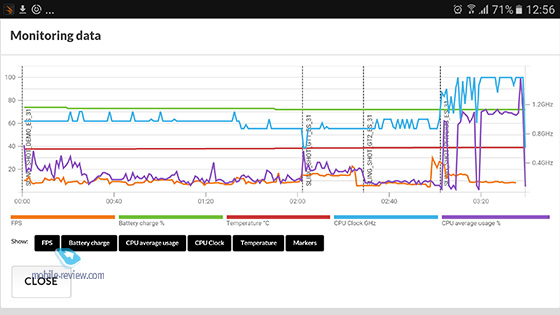
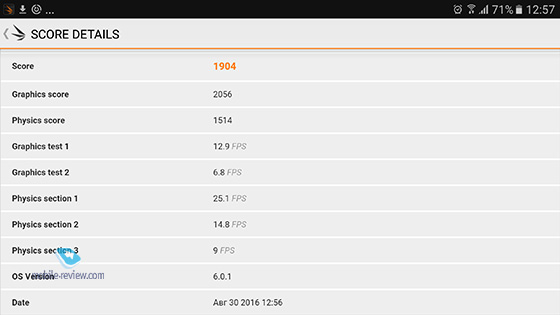
![]()



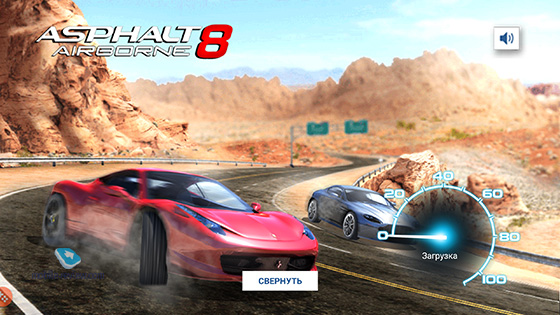
Battery
The battery capacity is 3500 mAh. It was assumed that the Note 7 will receive a new battery type, the same as in the J7 2016, but at the last moment the company played back, using the same battery as in the Galaxy S7 EDGE, albeit with a slightly smaller capacity. Apparently, the rejection of new technologies is due to the fact that the Note 7 as a whole decided not to stuff them with them, but to keep them for subsequent devices. Nevertheless, there are some technical solutions in the Note 7, they have not been encountered before.
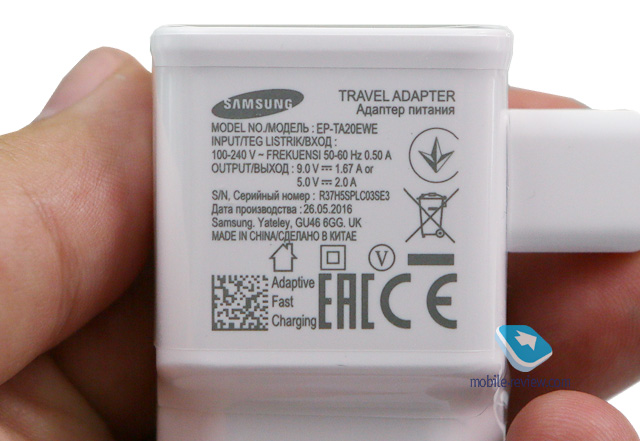
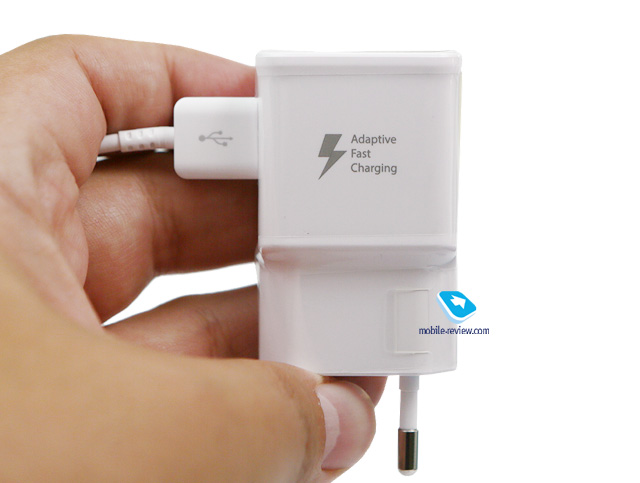
So, in the power saving mode, for the first time, you can change the screen resolution, for example, switch from QHD to FullHD, which will reduce the load on the graphics subsystem and give you plus 15-20% of the operating time with the same characteristics (screen brightness, the operation of all programs, etc.). etc.).

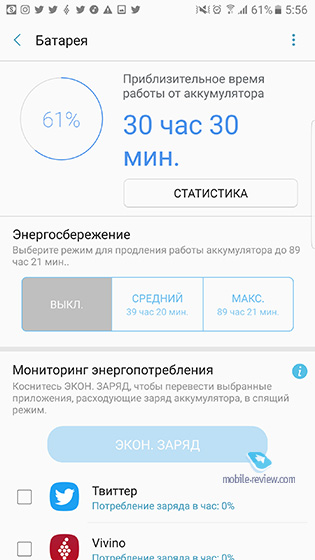
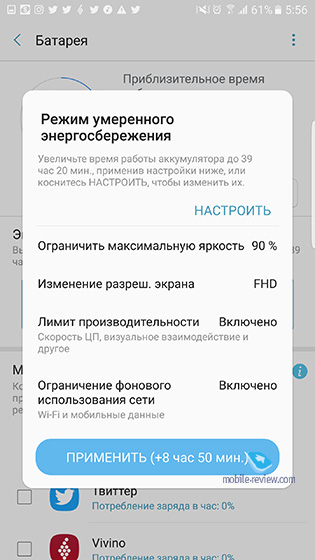
If you look at the device's performance in this mode, it will increase slightly.
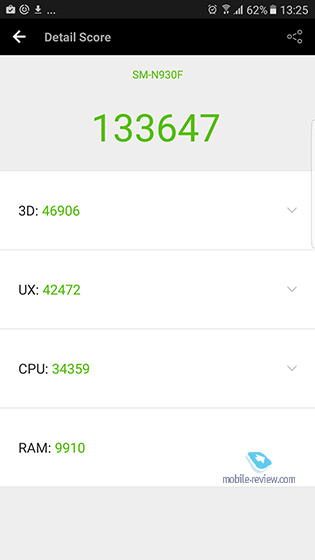
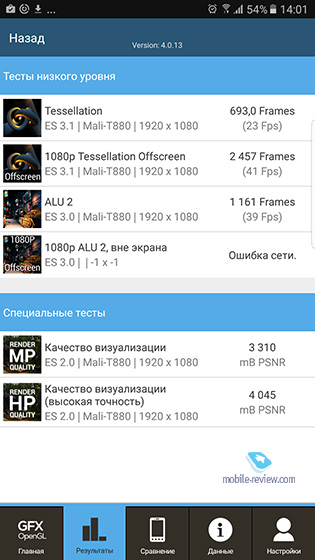




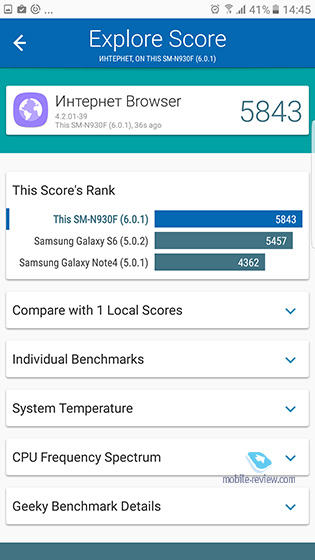

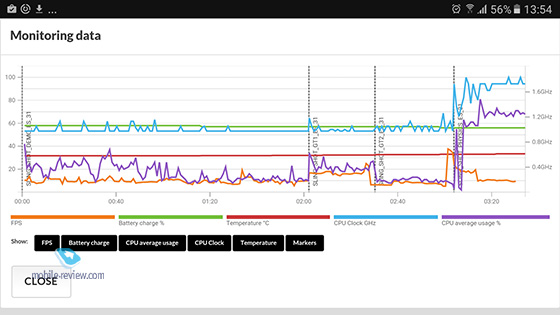
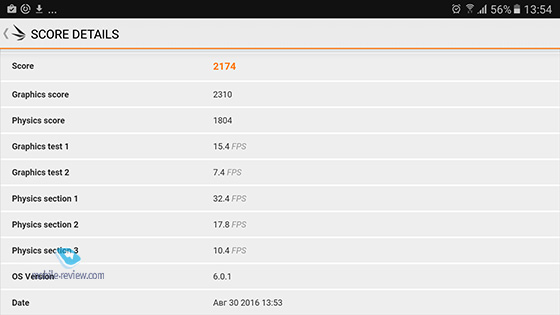
This is an interesting way to extend the phone's battery life, and at the same time choose the screen resolution that is comfortable for you and that you think is sufficient. In my opinion, most consumers will stay at the original QHD resolution, but some may choose another. Other manufacturers do not have this option yet, since it requires complex integration of OS software and display.
Now let's focus on the runtime of commercial devices. Everything here hasn't changed in any way compared to Note 5, this is a day of work, and in the same modes and with the same load. It turns out that with an average backlight, you will get (automatic adjustment), 3.5-4 hours of screen time and a full day of work. Video playback at maximum brightness - about 13 hours.

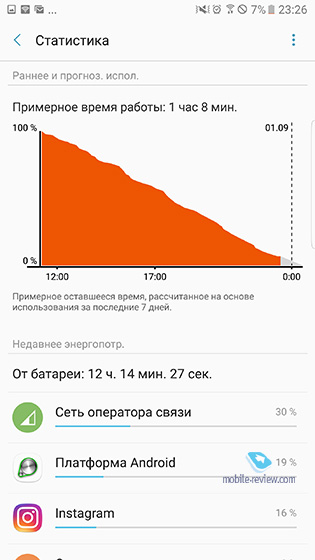
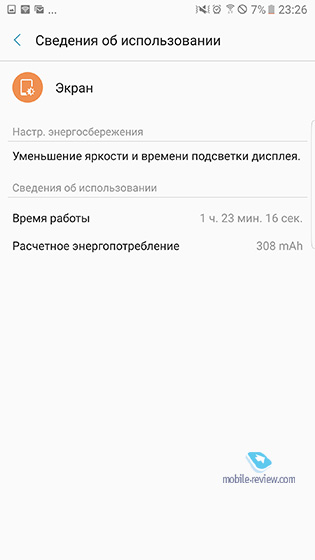
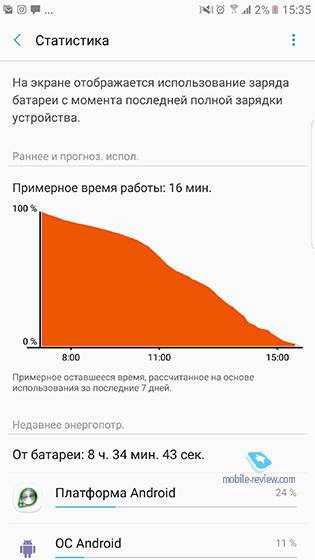
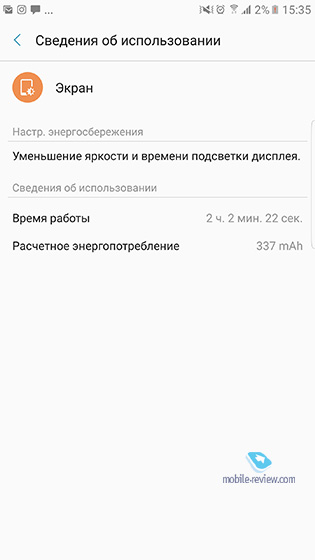
It is a pity, but the miracle did not happen, and the device is quite comparable with the same S7 EDGE, it is a confident day of work under load. If we talk about those who save money and squeeze everything possible from the phone, use a not very bright backlight, then you can achieve two days of confident work in mixed mode.
As before, there is fast charging, it has become a little faster (half a charge in 25 minutes). Wireless fast charging (WPC / PMA) supported.
Battery ignition, Note 7 replacement and worldwide recall
I'm sure you've heard a lot about Note 7s exploding. A separate material is devoted to this, which describes the causes and effects, as well as the company's actions to replace devices free of charge.
The situation with the marriage is unprecedented, and Samsung did not waste time on trifles, but stopped sales of the device all over the world, and those who had already bought a phone were offered a free replacement for devices from a new batch, with a different marking. Moreover, if we talk about Russia, then all those who bought gray devices can exchange them for PCT for free, the company will do this starting from the second half of September.
Devices from a batch with a potential marriage were not delivered to Russia, so those who received their phones by pre-orders can use them. Or they can change them to new ones starting next week. All new lots come out with updated labeling, devices from the first lots have been withdrawn, and they will not be on the market in any form. The media history around the flammable Note 7 is greatly inflated, while this problem can only be encountered in the United States or South Korea and with a certain procedure (first, you need to burn the charge controller with a non-original charge). Considering that only the updated devices will go on sale, there is no particular problem, it concerns only the first batches. Polls show that there are no mass refusals to purchase Note 7, moreover, less than 2% of buyers refused pre-orders in Russia, which speaks for itself. Another thing is that in Russia, as an apology for the postponement of delivery with the phone, they give a set of accessories in addition to Gear Fit 2.
The loop of media history will drag on for Note 7 for a long time, but it is unlikely to be able to hit the sales of the device hard. Only one and a half months have been lost, which were spent on the exchange, further sales will go as usual.
Iris scanner
One of the key changes is the iris scanner, this method allows you to unlock the device without touching it. The work of the scanner reminded me in ideology of what we saw on the Lumia 950/950 XL. With or without glasses, there is no difference, look at the device, and it recognizes your iris and unlocks. This takes less than a second. This method is unmistakable and works very quickly, it can compete with a fingerprint. Of the minuses - a slightly higher power consumption, but you have to pay for convenience?
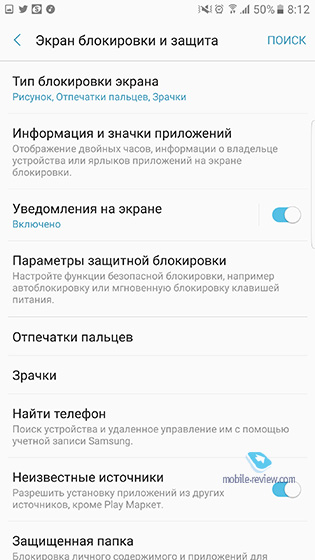
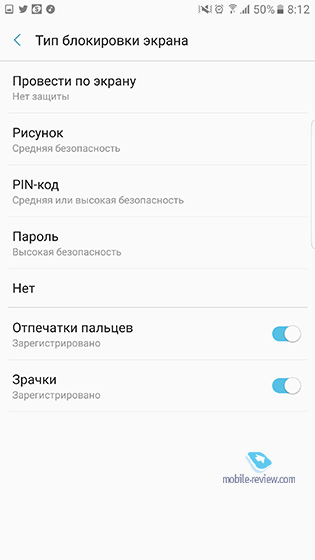
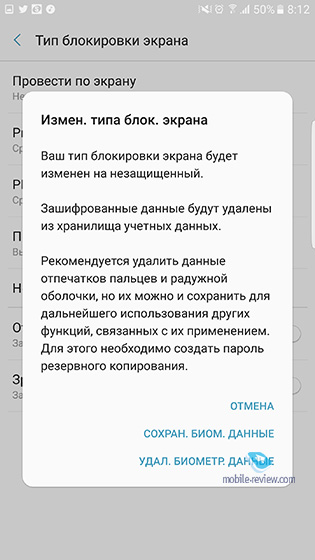



If the running-in of this technology in the Note 7 shows that it is interesting to the public and in demand, then it may appear in the S8 / S8 EDGE. Although it is possible that it will be one device, not two models.
S Pen - Pen features, new apps and styles
At the presentation of Note 7, we talked a lot and in detail about the updated S Pen, I will try to reflect the most important points. To begin with, most people consider the S Pen to be an additional and almost unnecessary thing; they rarely use the built-in stylus. On the other hand, there is a creative minority that is used to pens, loves to draw, and, on the contrary, does not let go of the S Pen, creates beautiful drawings, sketches, in a word, constantly uses the stylus. These two categories of people will never be able to understand each other, they have too different tasks and needs. Unfortunately, I never learned how to draw something other than a stick-stick-circle, and as a result a little man, so I consider myself to be among the majority without any special artistic talents.
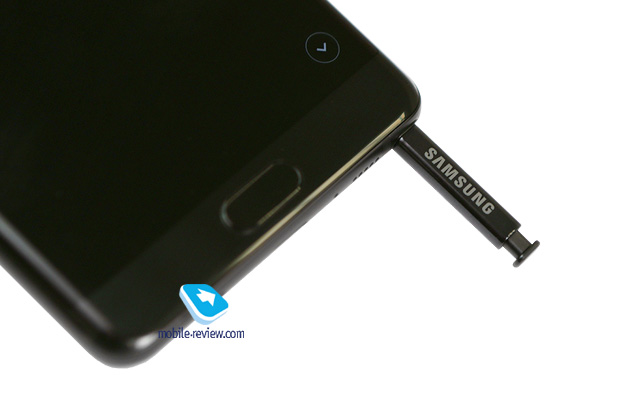
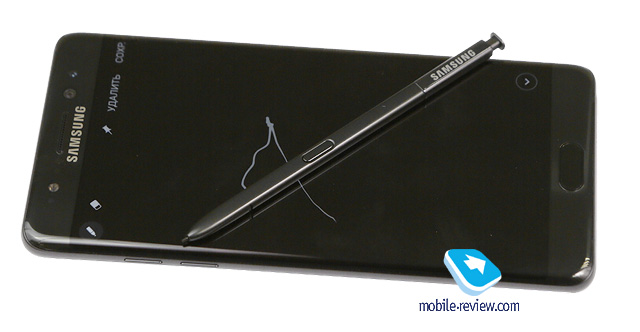
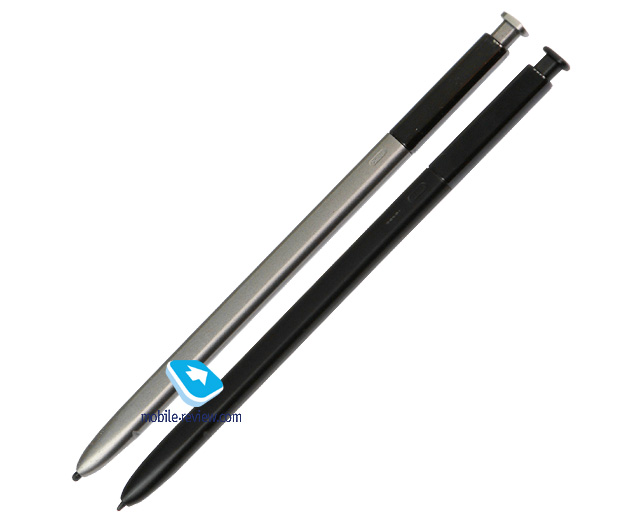
For me, the S Pen is the ability to leave a quick note, write on the screen, without even unlocking the phone. This is very useful in meetings when you need to remember something and you do not need to write it down in a notebook. Short notes on the run that also sync to the cloud.
But perhaps the most important thing is the ability to take a screenshot of a page that does not fit the entire screen. The function appeared back in Note 5, it came in handy to me more than once to show certain things, instantly send them in the form of one file, and not torn pages.
Another important point is the ability to take a screenshot anywhere on the screen and immediately draw something on it, cut out a piece. It's also interesting for those who work with graphics and the like.
From the useful, I will also tell you about the ability to recognize text in pictures, that is, you save everything that you photographed or took a screenshot, not only as graphics, you can take out the text from there. In my work, it is an indispensable tool.
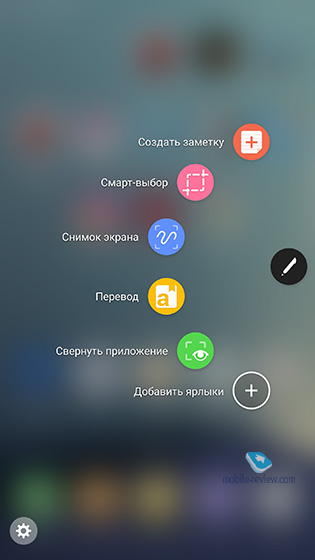
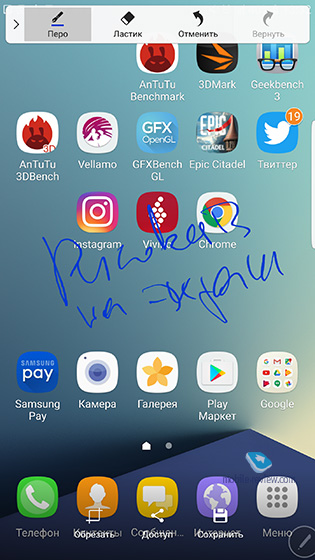
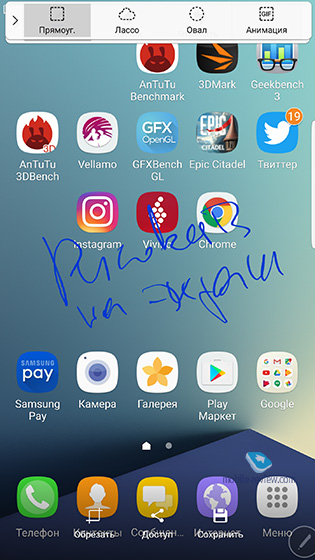

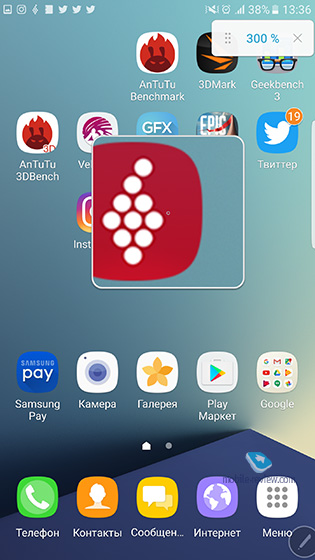

A new feature is the translation of individual words, in this mode you set the direction of translation and you can spy on any words that will be shown immediately. The engine from Google is used, the function is pleasant for those who study or constantly rewrite in different languages, not always having a dictionary at hand.
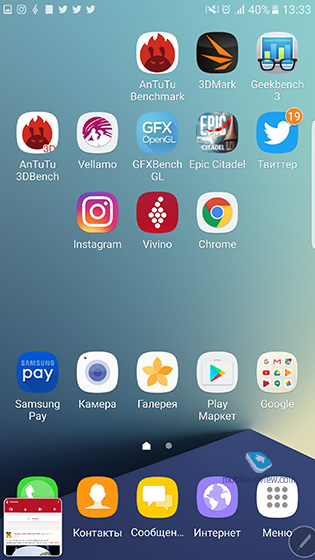
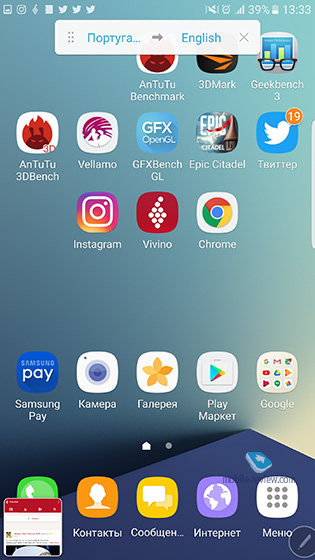

The fact that the S Pen began to work underwater is nonsense in my opinion. It is unlikely that scuba divers will use the phone when diving, and even at a depth of two meters, it will simply leak. But what you can write in the rain is already a real application scenario, which is easy to imagine.
The pen has physically become a little smaller, the recognition accuracy has increased, as before, 2048 degrees of depression are taken into account. The S Note app now has a paint mode where you can mix colors, something that wasn't there before.
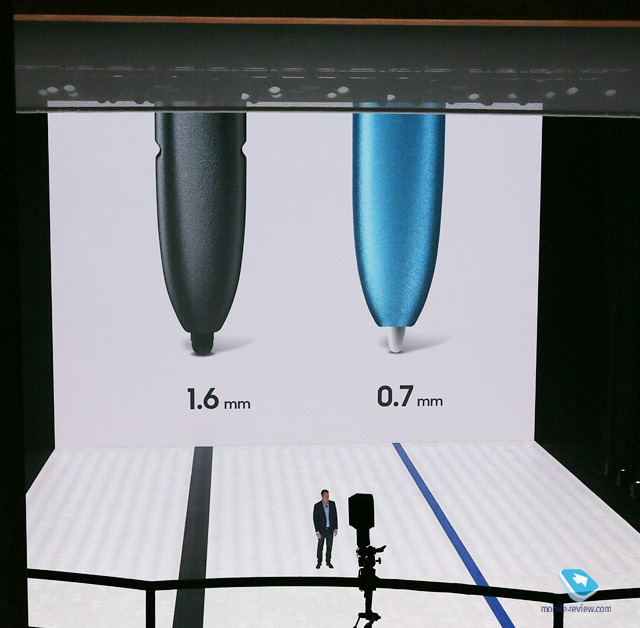

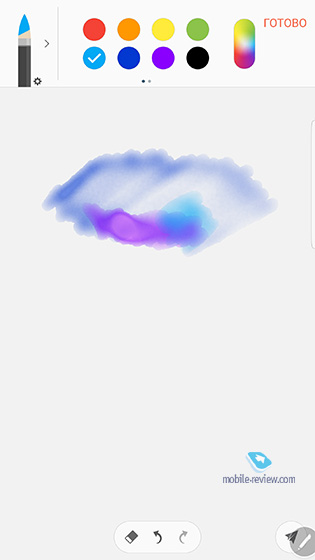
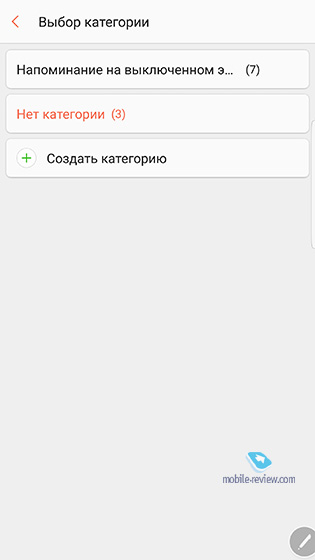
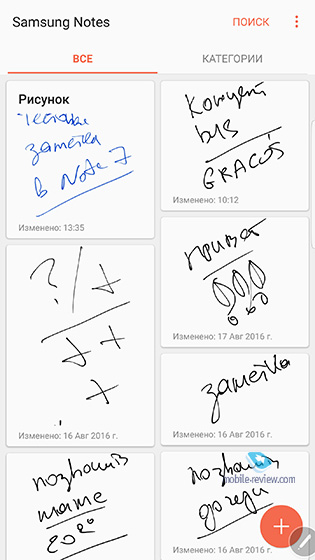

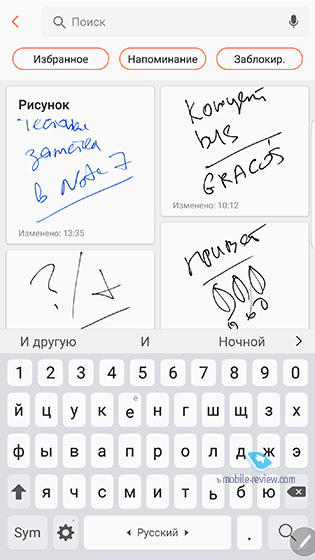
In the first batches of Note 5, out of the blue, bloggers created problems that the pen could be inserted into the connector with the wrong end. It is not clear what kind of drunk you need to be in order to do this, but then the design was changed. In Note 7, trying to insert the wrong end of the S Pen will not work, the pen simply will not go into the slot.
I can't say that I use the S Pen very actively, sometimes it happens that I don't get it for several days, sometimes I draw something on screenshots a couple of times a day, I cut out pictures. But I can say for sure that it helps me to quickly complete routine tasks that I face from time to time. In other phones, there is simply nothing like this. Handwriting recognition has become noticeably better, but, in my opinion, it is not as convenient as just typing text on the keyboard, although perhaps someone thinks the other way around. I am sure that the number of people writing is getting smaller every year. And therefore, the S Pen is not so much for writing as for performing tasks in which it is difficult to replace the stylus with a finger.
Camera
Formally, these are the same cameras that we saw in the S7 / S7 EDGE, in fact, the image processing algorithm has been improved, the difference is not cardinal, but it is there. Autofocus works instantly, however, it was like that on the S7. Due to the increased performance, the processing of images and video is much faster. As well as the image stabilization algorithm has changed, it is sharper when shaking. This is one of best cameras on the market, I would like to separately compare it with the iPhone 7 Plus, but we will do it in October. In the meantime, you can see examples of photos and videos from the device. Due to the updated screen, the photos on it look noticeably better than on the S7 EDGE, but this is exactly the effect of the picture on the display, you will not find the difference on a PC, or it will be minimal.
The front camera has a resolution of 5 megapixels, slightly increased light sensitivity. The screen itself can act as a flash. It is possible to improve complexion, remove artifacts on the skin, and at the same time correct the geometry of the face. Face enhancers will definitely appeal to girls.
Sample photos
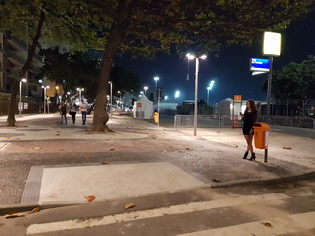
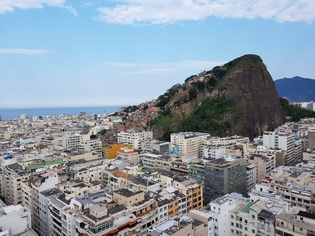






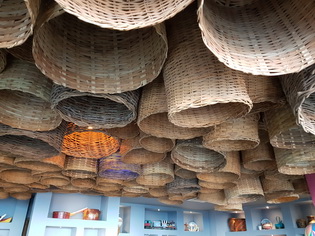



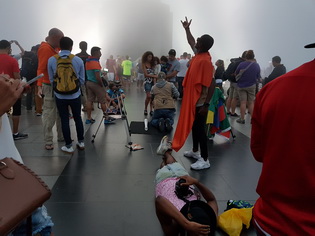
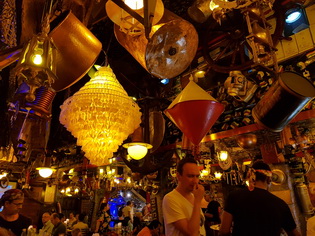
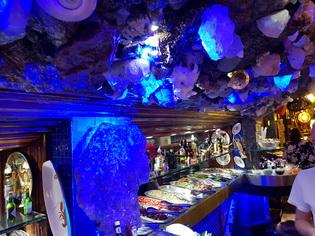


![]()
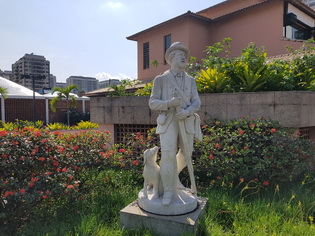





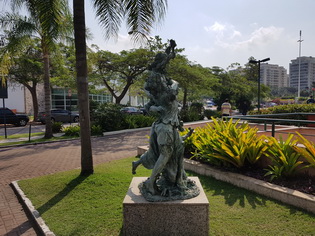
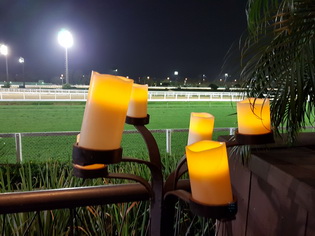


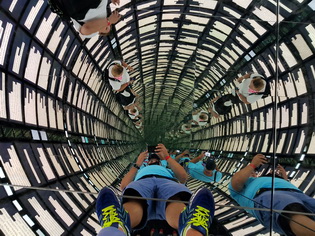
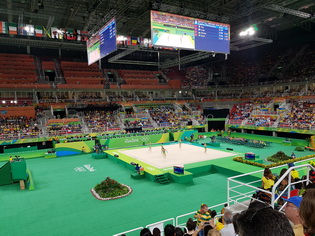

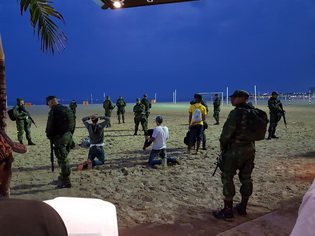

![]()
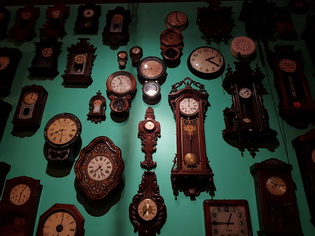
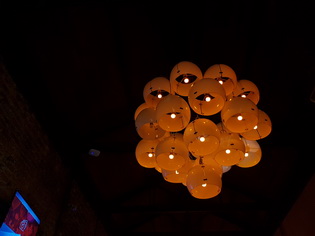

![]()


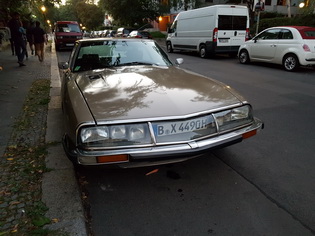
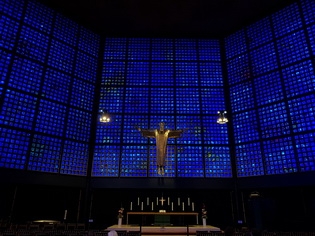
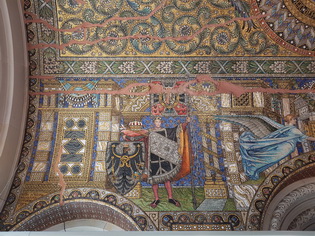
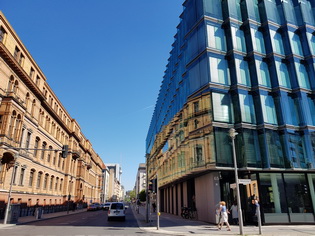


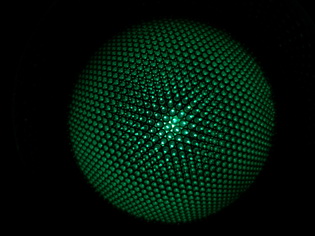
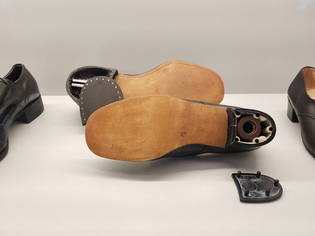

![]()

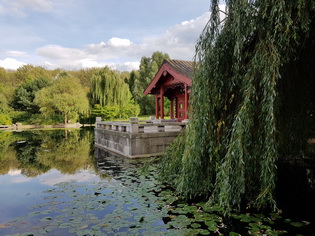


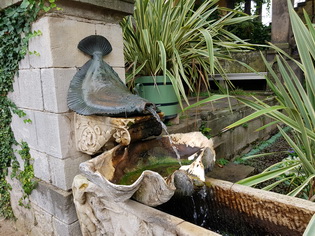







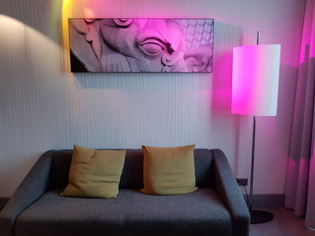




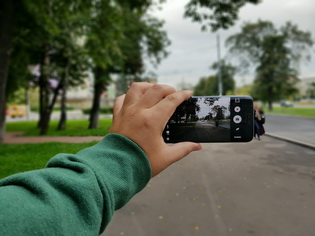


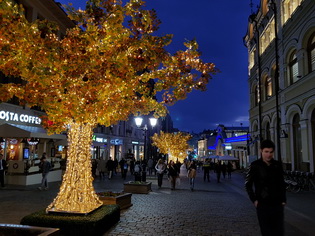
![]()
I think that the photos speak for themselves, the camera quality of the Note 7 is in no way inferior to the best solutions on the market, and in many ways even surpasses them.
USB, Bluetooth, communication capabilities
Version Bluetooth 4.2, it was built for the Internet of Things and works great with various sensors... Otherwise, there are no special changes, new profiles have appeared, energy consumption has improved. Let me remind you that there is something interesting in the new standard.
Firstly, this is an extended range, which can reach several tens of meters, depending on the device settings and how the manufacturer configured this option. Secondly, IP is used for addressing, that is, devices now have their own unique addresses and communication with many such devices is supported.
From technical points, the interaction of Bluetooth and LTE has been improved, now, within the framework of one device, the operation of these technologies is synchronized, mutual interference is not created (for our LTE frequencies not relevant). Plus, Bluetooth devices can now access the cloud and transfer their results directly, bypassing the companion device, as was previously necessary.
USB connection... This uses USB 3.1.
Wi-Fi... Supports 802.11 a / b / g / n / ac standard, the wizard is similar to that for Bluetooth. You can remember the selected networks, automatically connect to them. It is possible to set up a one-touch connection to the router, for this you need to press a button on the router, and also activate a similar button in the device menu (WPA SecureEasySetup). Of the additional options, it is worth noting the setup wizard, it appears when the signal is weak or disappearing. You can also configure Wi-Fi to work on a schedule.
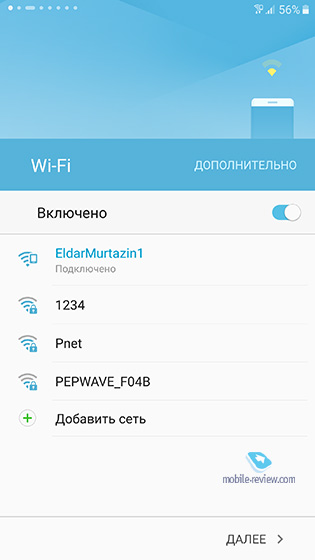
For 802.11 n, HT40 mode is supported, which allows you to double the Wi-Fi bandwidth (requires support from another device).
Wi-Fi Direct... A protocol that aims to replace Bluetooth or compete with its third version (it also uses Wi-Fi version n for large file transfers). On the menu Wi-Fi settings select the Wi-Fi Direct section, the phone starts looking for devices around. We choose desired device, activate the connection on it, and voila. Now, in the file manager, you can view files on another device, as well as transfer them. Another option is to simply find the devices connected to your router and transfer to them required files, this can be done from the gallery or other sections of the phone. The main thing is that the device supports Wi-Fi Direct.
Wifi repeater... Usually, when you turn on the access point on your phone, it instantly turns off Wi-Fi, you cannot use both at the same time. Right there, as in S7 / S7 EDGE, there is an opportunity to distribute your Wi-Fi to other devices, see about this in the video.
NFC... The device has NFC technology, it can be used with various additional applications.
S Beam... A technology that allows you to transfer a file of several gigabytes to another phone in a few minutes. In fact, we see in the S Beam a combination of two technologies - NFC and Wi-Fi Direct. The first technology is used to bring up and authorize phones, but the second is used to transfer the files themselves. A creatively redesigned way of using Wi-Fi Direct is much easier than using a two-device connection, selecting files, and so on.
Grace UI and Note 7 interface features
Starting with the Note 7, Samsung is switching to an updated Android interface, which is named Grace UI. The ideology has remained the same - to provide the most simple and lightweight interface that will be similar to regular Android on the one hand, but will provide many improvements on the other. Unlike the previous year, many of the changes are directly related to the hardware capabilities of the devices, which makes them interesting. Let's take a closer look at what has changed, how the system looks and what it allows the user to do.
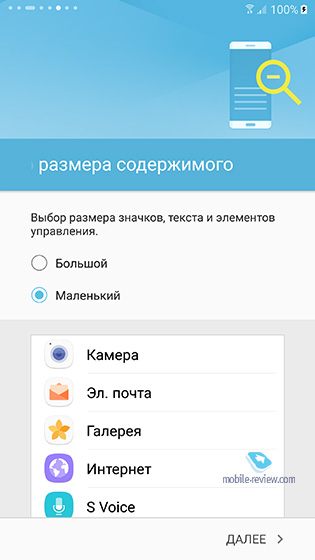
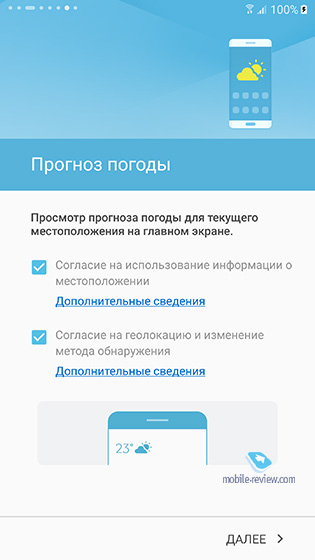

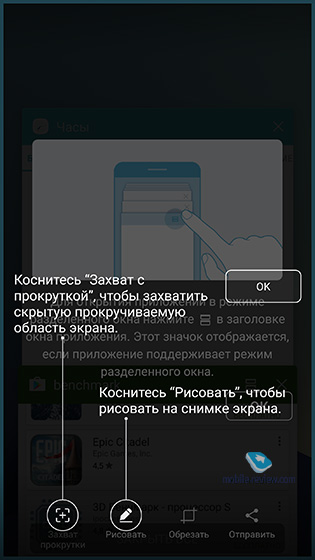

Main screen, curtain and settings
At first glance, nothing has changed, except for the rendering of icons, a drop-down curtain and other small elements. Many people perceive these changes as cosmetic, although they are not, and they are more serious.



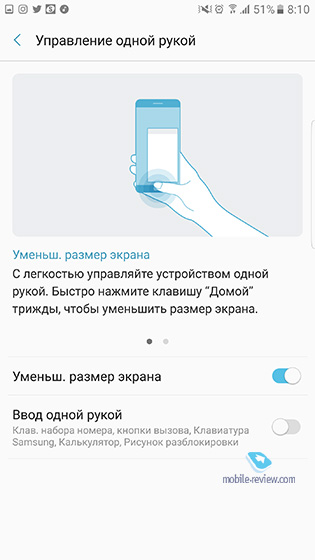

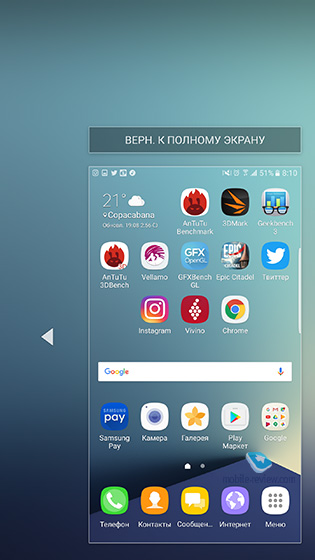

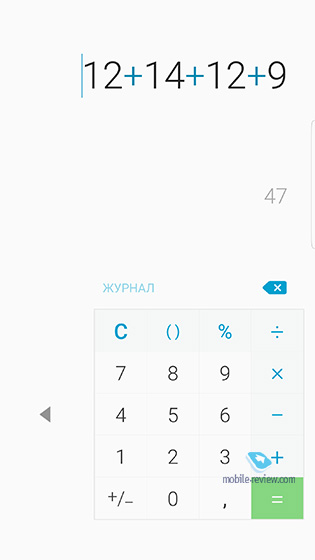
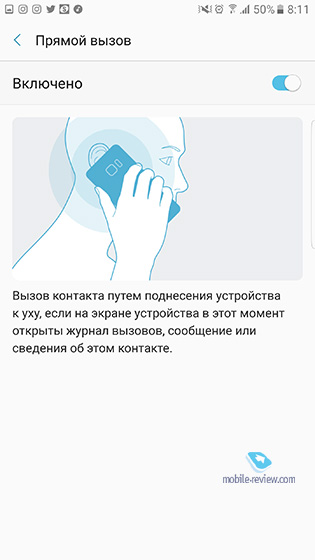
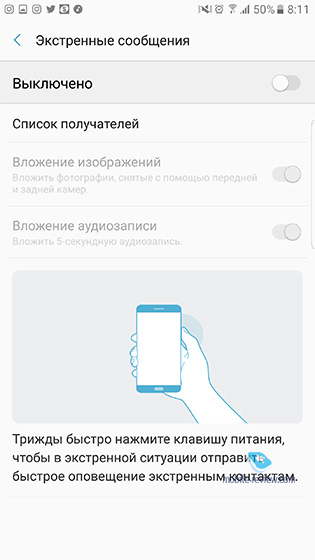
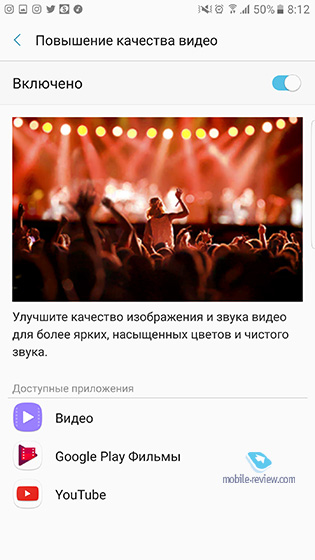

The first thing that catches your eye in the settings menu is the delicacy of the fonts and a larger amount of information that fits on the screen. If in previous version While large, bright icons were considered simplicity, then functionality and the ability to show more information were put at the forefront. Those who advocate simplicity will be unhappy, but in fact, this approach is more convenient, you do not need to scroll through screens to open the desired menu items.
We put “connections” at the top of the list, in this section you can manage all the wireless interfaces of the phone, for example, Wi-Fi, Bluetooth, NFC. If earlier it was possible to set the visibility of the device to others only when one or another function was activated, now there is a general switch, you can activate it, and then the smartphone will always be visible in the search. Notice that radio buttons become the main item in the list, and tooltips appear that describe each menu item. This is very convenient and makes it easier to work with the phone.
Of the features of the device, I would like to point out the combined loading of large files as per cellular network(LTE) and Wi-Fi. The file is split into parts and downloads are faster. You can also find MirrorLink here, when you can cast your phone screen to other devices.
When using two SIM-cards, you have the opportunity to choose the main one for calls and also from which card the Internet will be used. On the other hand, when making calls, you can choose the card from which you are calling, the interface is very simple and straightforward.
In the "Sounds" section, you set up vibration and melodies for different events. There are also sound effects and equalizers, they work for any application on the phone. That is, you can customize everything as much as possible for yourself.
In the "Notifications" section, you select programs that can update their statuses in the curtain or send messages about events, you can immediately turn them on or off, customize their behavior.
The "Display" section allows you to select the screen operation mode, this is a color gamut, which is adjustable in four options, night reading mode, when the blue color changes so as not to get tired of the eyes. Traditionally, you can choose the font size, style for system menus, and download new fonts. There are settings for a curved screen.
Icon frames, main menu presentation and much more are also set up right there. In practice, most of the settings are done once, and many do not even change anything, since they are satisfied with everything.
It is worth paying attention to the fact that it is impossible to take screenshots in the "Themes and Wallpapers" section, now there is such a security policy. The company is trying to protect the developers of this content. You can install both themes and separate icon sets for all applications, which allows you to change the look of your phone as you like.
Watch the Grace UI video for a detailed look at all the features of the updated interface.
Game component, Vulkan API
At the presentation of Note 7, special attention was paid to the gaming component and repeated, like a mantra, the words about Vulkan API which improves the graphics in toys. Since the S7 / S7 EDGE demo, Need has been used to support these words for Speed: No Limits, Vainglory. This game demonstrates the difference between the graphics and the regular version. Unfortunately, you can stop at this game, at the moment the game developers have not yet created their masterpieces for the Vulkan cross-platform engine, this will take time. By the time such games appear, and it will take a year or two, or even three, the need for a phone will disappear. Therefore, it is impossible to consider the Vulkan API as a kind of advantage, it does not exist, or it is only on paper. In real life, you do not gain anything from the fact that there is support for this API.
Samsung Cloud - cloud storage from the company
Let me remind you that together with Note 7, the service Samsung Cloud was born, you are given 15 GB in the cloud, and photos, videos, contacts and SMS are automatically uploaded there, everything is synchronized between your different devices. You can choose to sync over Wi-Fi only. Unfortunately, there is no web client, you can only view photos from supported devices. For S7 / S7 EDGE, a firmware has recently been released with support for the updated gallery and thus Samsung Cloud.


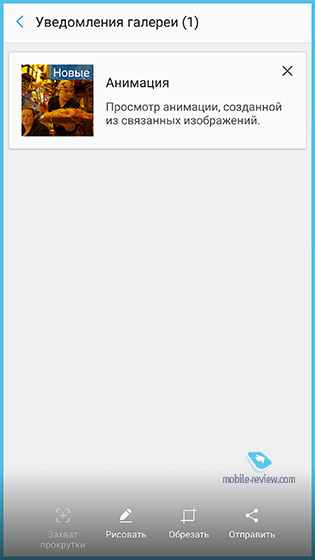


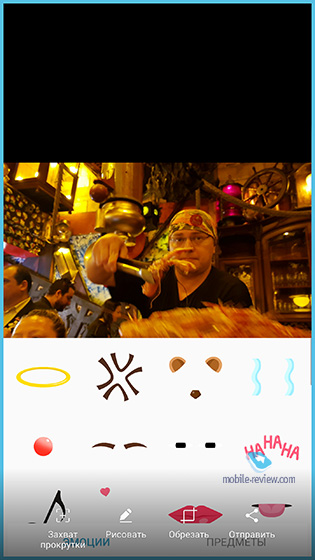
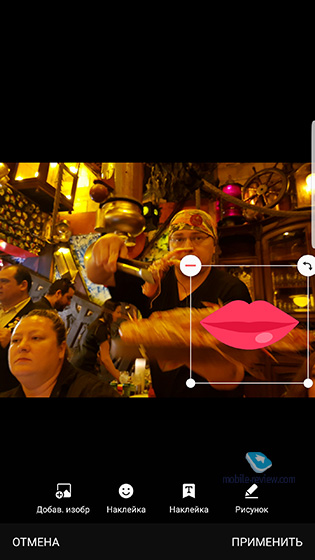


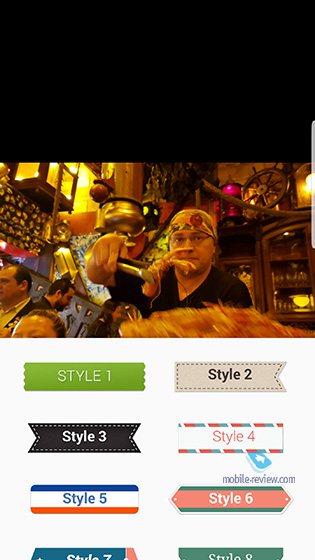



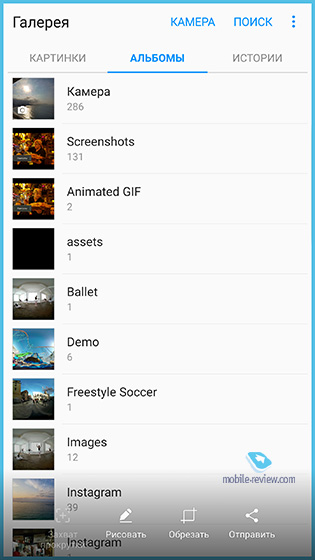
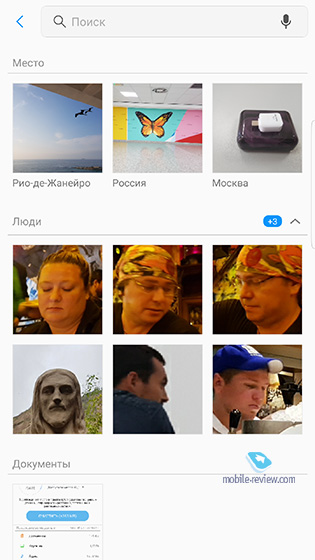




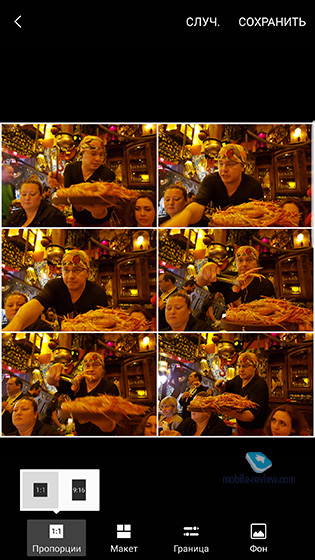
![]()
After the files are uploaded, for some reason they are shown in the gallery albums at the very beginning, sometimes they start to be duplicated. Crooked and crooked again. I had to go to file manager and the downloaded files can be simply transferred to another location to save them.
Another point to which I paid attention. When you upload your images to the cloud, their quality deteriorates, but this is not shown to you. That is, the information shows you that the photo file weighs 4 MB, in fact it can be half as small! This is a compressed copy that has full version on the server, but this is not shown to you or warned. If you have an Internet connection and for a small number of pictures, this is not a problem, they are quickly downloaded from the cloud, and it seems that they are on your device, as they were originally. But when there are a lot of photos, there is a long wait.
How much I like the idea cloud service, I don't like the implementation of Samsung Cloud so much, at the moment it is very crooked, poorly described at the level of ideology and what happens to files, clearly inferior to solutions from other companies. The only plus is the initial integration into the phone's software. Having inquired about the plans for the development of this service, I heard a lot of interesting things, they know about the errors and plan to gradually correct them, but no one knows how quickly this will happen.
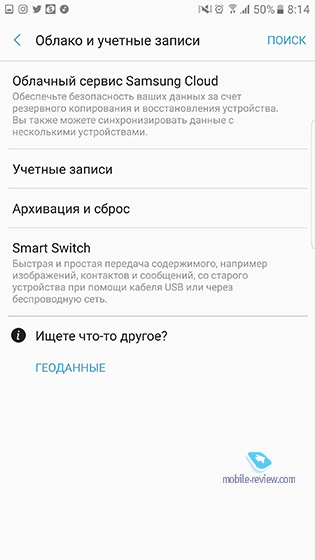
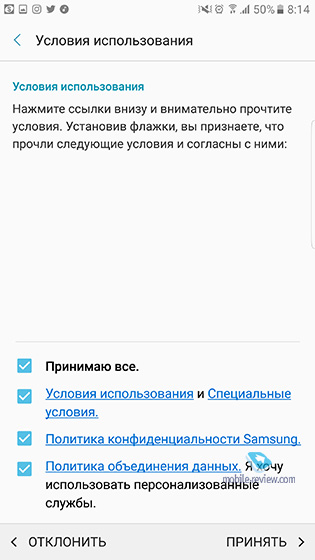

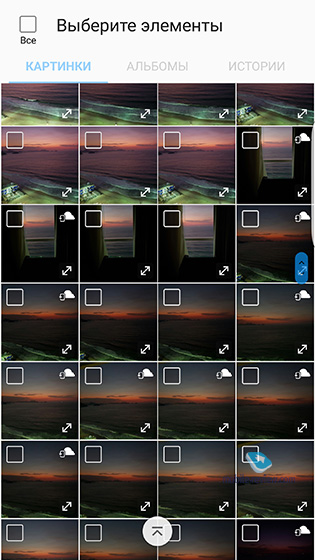
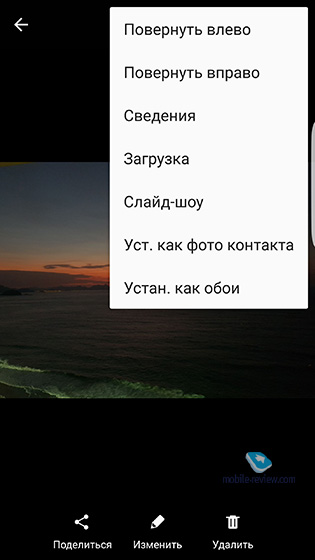

Р'РёРґР¶РµС ‚РѕС‚ SocialMart
Impressions
The speaker volume of the Samsung Galaxy Note 7 is on par with the S7 / S7 EDGE, the speaker is located at the end - it is very clean and loud, the device is well heard in different conditions. We can say that in terms of sound it is one of the loudest and most pleasant devices of the company. The power of the vibration alert is average, there are no achievements here. Everything is fine with the quality of voice transmission during a conversation in different conditions, in difficult zones where the signal is weak, the device copes with it quite well, there is a noticeable improvement in this parameter compared to the S7 EDGE.
Samsung has turned out to be a flagship for the phablet market, and in this capacity Note 7 is one of the best devices. The previous generation of Note 5 pushed many away by the lack of memory cards, to a lesser extent, a non-separable body. With the current Note 7, memory cards are back, which means people are moving from previous models like the Note 3/4 to this unit. To a lesser extent, they will switch from Note 5, since the model is still relevant and its users will clearly wait for a decrease in prices for Note 7, they will not buy it at the start of sales.
There are actually two devices on the market that can and should be compared, the iPhone 7 Plus and the Note 7. They are very similar in form factor, metal chassis design and selected body materials. Comparison of the two flagships deserves a separate, large material, so I will focus here on the advantages of the iPhone 7 Plus that can attract consumers:
- New system from two cameras, which in theory improves the pictures (which needs to be checked in practice, but in advertising it sounds very cool, you have to look at how it will be in reality);
- Design, the image component of the iPhone.
Relative disadvantages - the lack of a 3.5 mm jack in the iPhone, the need to buy adapters if you want to listen to music and charge the phone at the same time. I am sure that such people will be in the minority - those who feel the need for it.
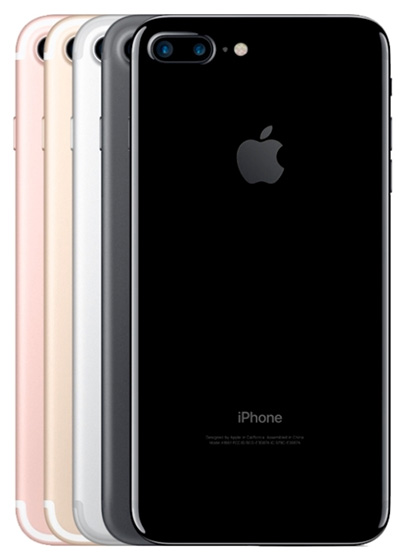
Traditionally, the Note line has the edge over all S Pen stocks. If you understand how to use this pen, then you have tremendous opportunities for both creativity and work. It is comfortable. Another thing is that many do not need it due to the absence of such a need. Therefore, assess realistically how important this factor is to you.
Both devices are protected from water (IP68 in Note, IP67 in iPhone), the Note display is noticeably better for different situations, but the iPhone also has an excellent matrix, which looks no worse indoors, gives a comparable picture, which is certainly subjective. and someone may disagree with this. For me, the lack of fast charging in the iPhone is critical, it binds hands. As well as absence wireless charging, which is convenient in different situations. To some extent, the iPhone acts as a catch-up in relation to the Galaxy / Note line, adopts many features of these devices, which is normal. If you go to the top without going into details, then you will get plus or minus the same impressions of these two devices, but digging into the details, you can find out a lot of interesting things. This is the number of branded accessories for each model, and other aspects. Everyone will choose based on their preferences, I like the Note line, as it has been proven in practice from previous generations that the camera is better in most situations, all the settings and capabilities are more flexible, more memory out of the box and there are memory cards that give you unlimited space ... In short, this is the eternal struggle of different approaches, I choose freedom in everything, in particular, I do not need a computer at all to work with Note, as, indeed, with any other Android smartphone.
With a price tag of 68k for the iPhone 7 Plus and 65k for the Note 7, they can be considered the same in this respect. Full equality of price and price segment... The first sales of the iPhone 7 Plus will begin on September 23, but the device will be widely on the shelves in mid-October, around the same time will be repeated launching Note 7 after stopping sales. All indications are that both models will sell in comparable volumes in the first quarter of sales, and then, as in the past, the Note line will go up. Unfortunately, all Plus models from Apple are not in great demand, in the past this was the case, and there is no prerequisite that this year will change anything.
In the line from Samsung, the direct competitor for Note 7 is the S7 EDGE released six months ago. The price of this model is 60 thousand rubles (official retail), on the gray market - 48-50 thousand rubles. Almost the same filling, a screen with a large curvature at the edges, a slightly more compact body. The screen is excellent, but it is inferior to Note 7, the camera differs not so much, they are on the same level. The storage capacity in the S7 EDGE is only 32 GB versus 64 GB in the Note 7.
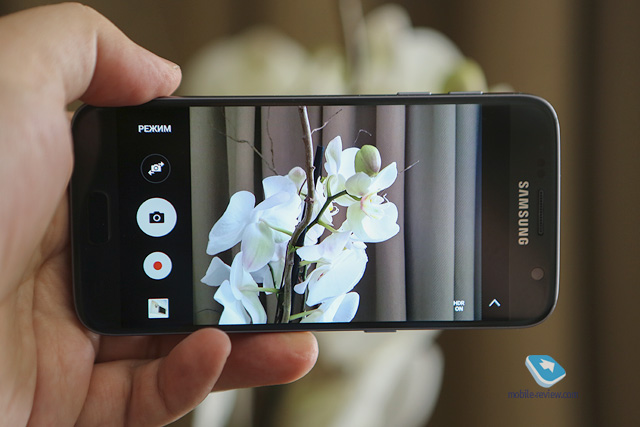
Many, not considering the S Pen important for themselves and choosing a slightly smaller size, after the announcement of the Note 7, began to purchase the S7 EDGE, considering it more convenient. As a user of both smartphones, I can say that at first glance this is so. But in fact, the Note 7 is more convenient for me, the grip is better, the screen is not much, but larger, and at the same time it behaves much better in the sun and outdoors. The operating time is approximately comparable, if you do not use some tricks and settings, but use it on the forehead. If you set up your phone correctly, then you will win about 15-20% on the Note 7, but is it necessary? I don't think it is necessary.
Often people compare flagships with the Chinese at a price two or even three times less. Do not deceive yourself, each product has its own price, and buying even an eminent Chinese, you always do not get this or that opportunity. Choose a worse screen, lack of the same protection against water and much more. There are two top-end devices on the market today - iPhone 7 Plus and Note 7, you can and should choose from them. The models of other companies lag behind them in many respects, and most importantly, in terms of perception, they have little image.
At the end of the review, it is simply necessary to make a remark about flammable batteries, despite the fact that we talked about this above. Since the beginning of October, Note 7 has been on sale around the world with a different battery design, so you can safely buy them, they have different markings, and later I will post the corresponding photos here. Should you buy a device now? Basically, this can be done if you find where to buy it, since Samsung has suspended sales worldwide. But you definitely shouldn't take the risk and take devices from the USA, as well as Asia. The media story around the "explosions" is greatly inflated and in many respects distorts the real state of affairs. I'm not sure that the rush when choosing a flagship is beneficial, it's better to wait for the new Note 7 wave to appear and take the device from it. At the moment I have been with the Note 7 for more than a month and I can say that this is my main device. The device turned out to be very sleek, well-functioning and balanced. However, this can also be understood from the review.

